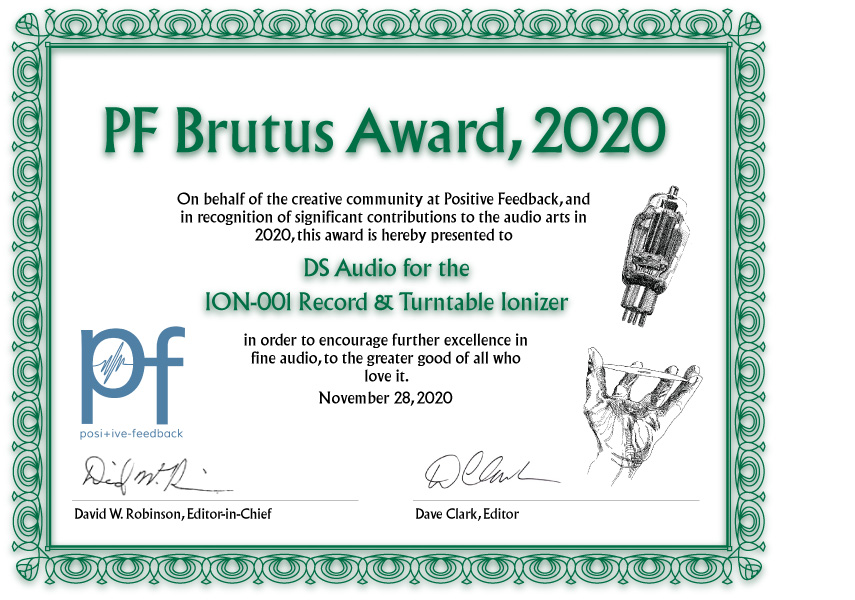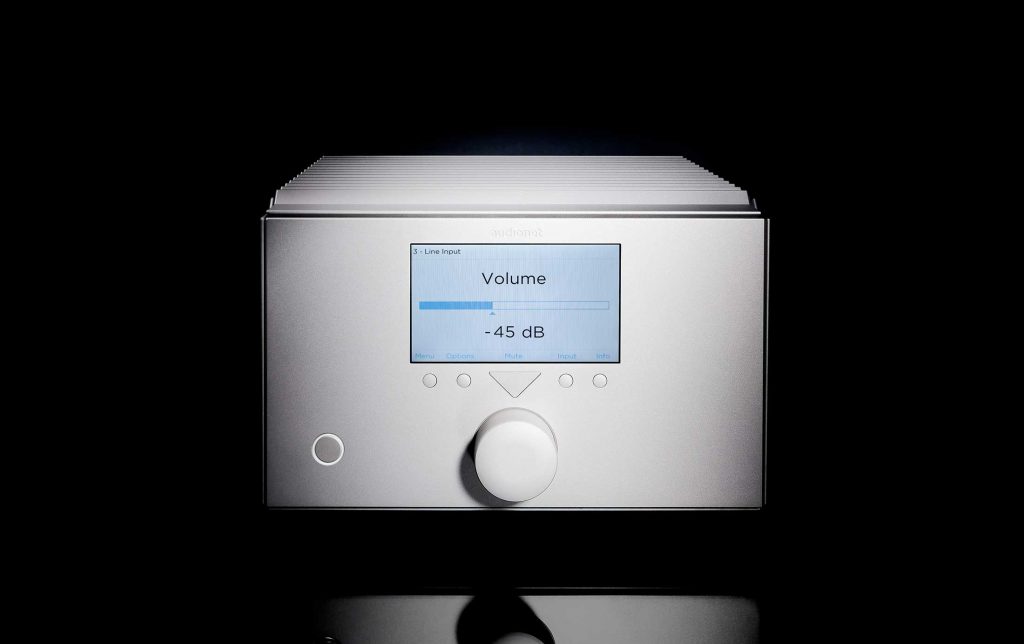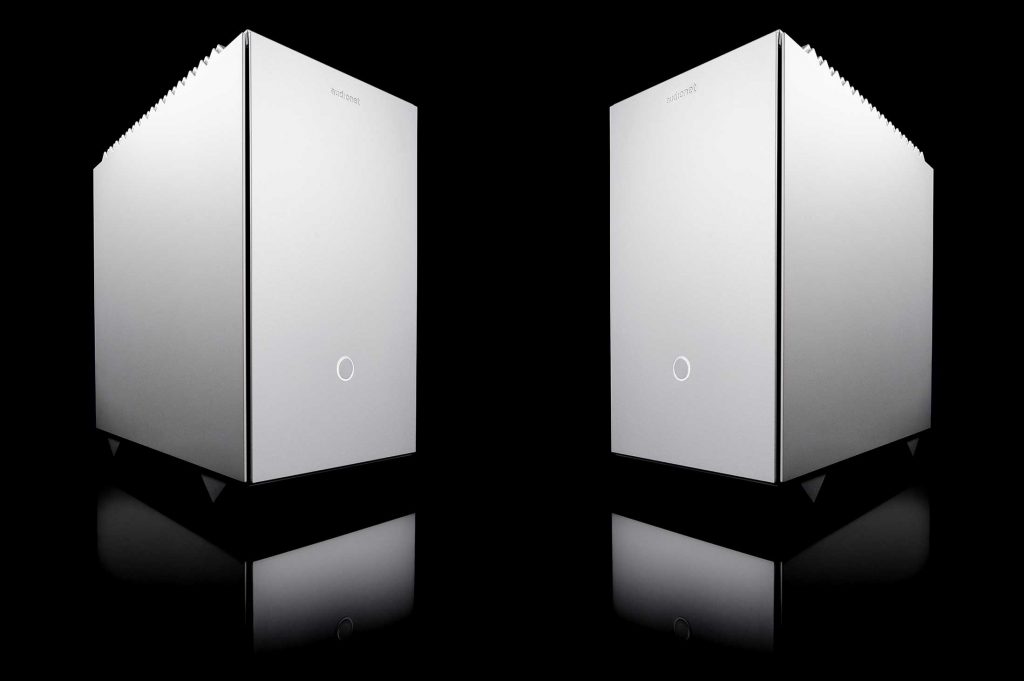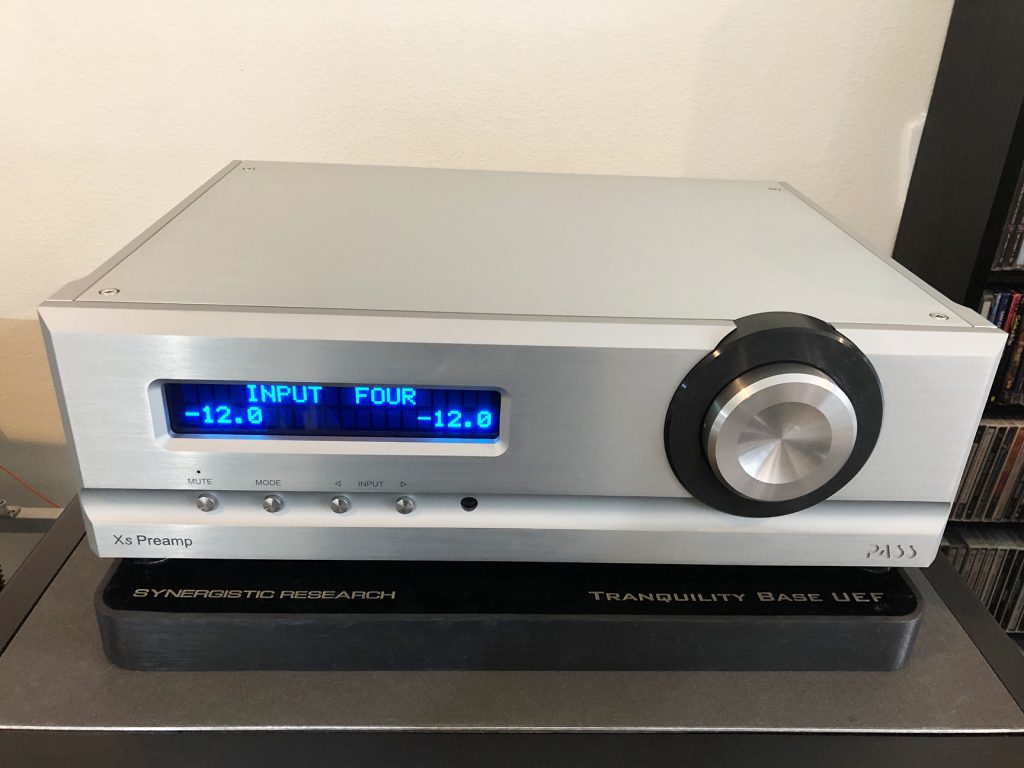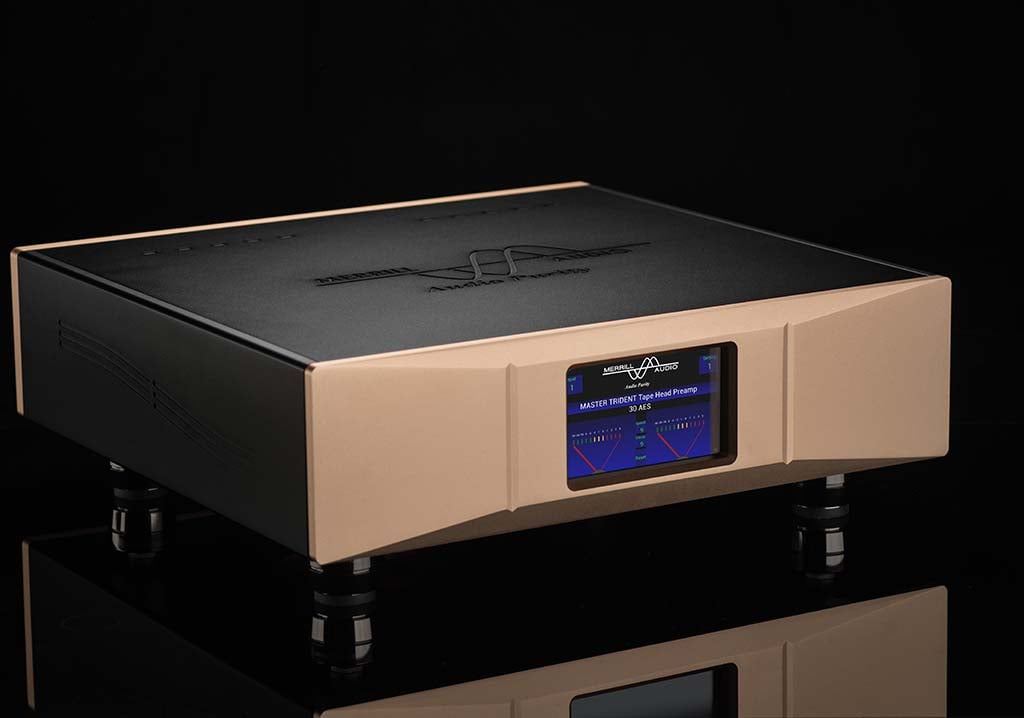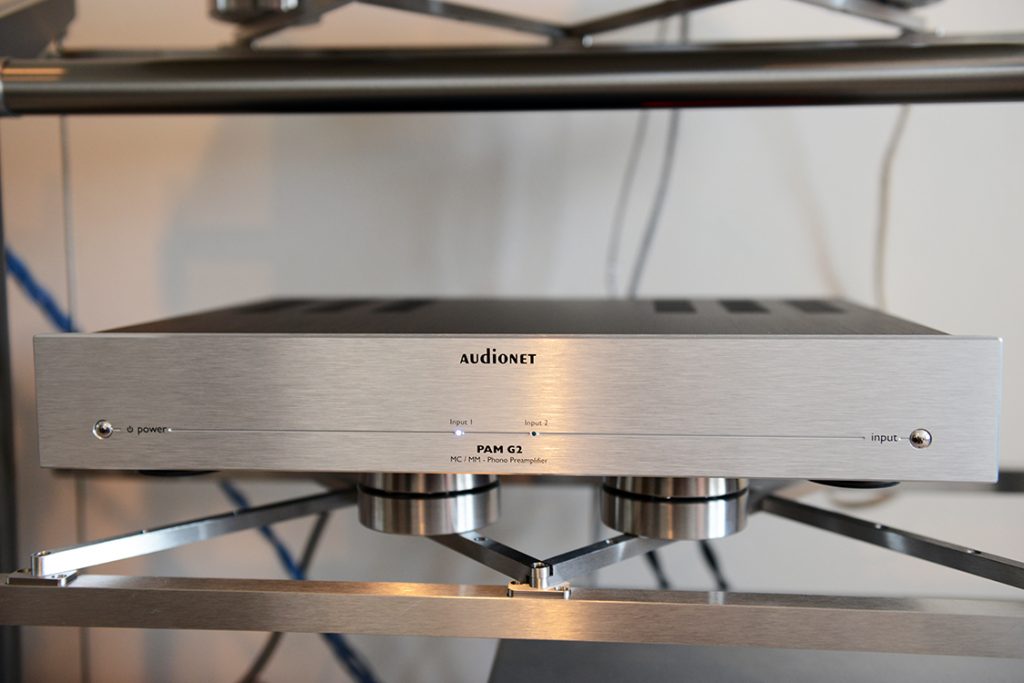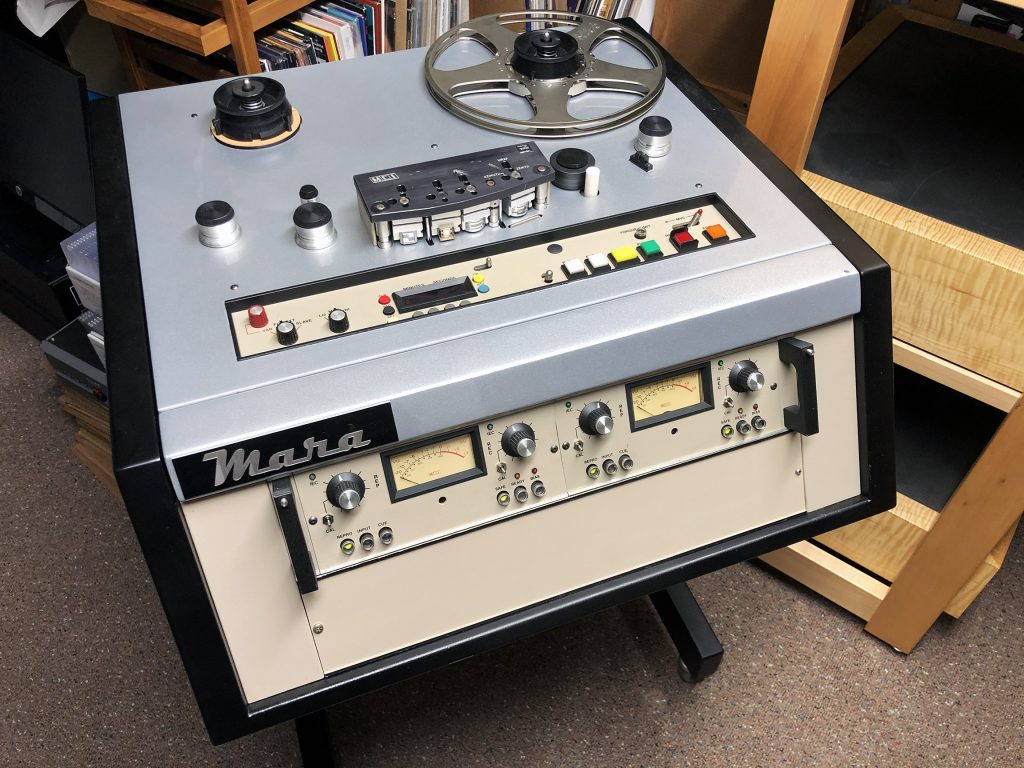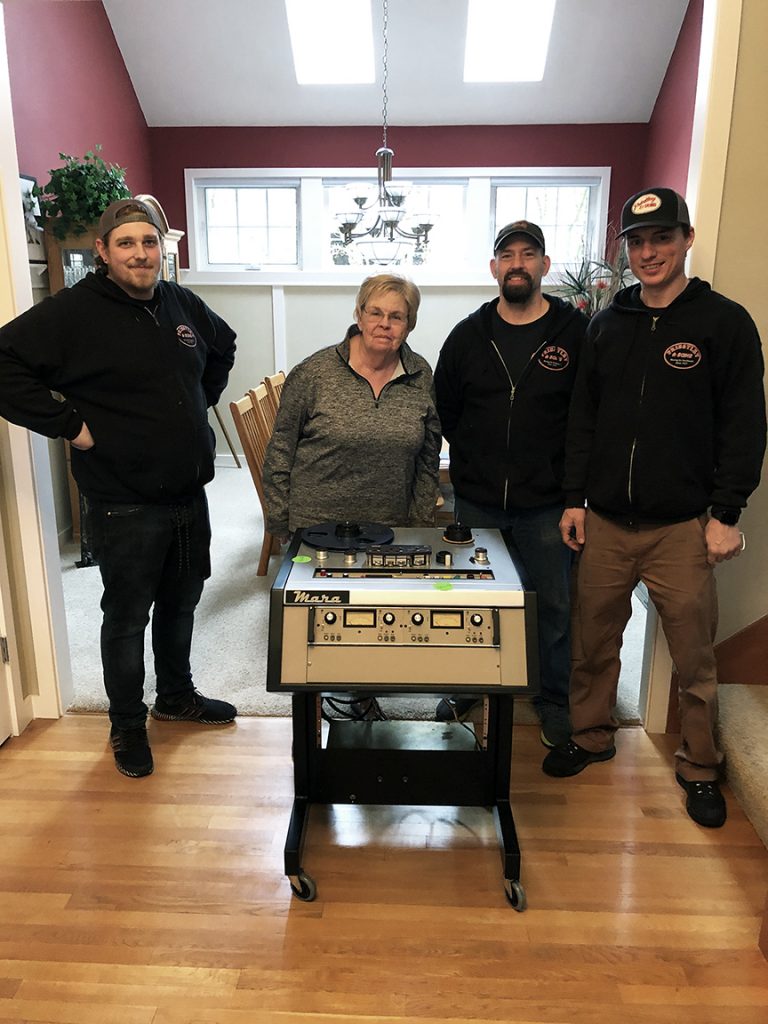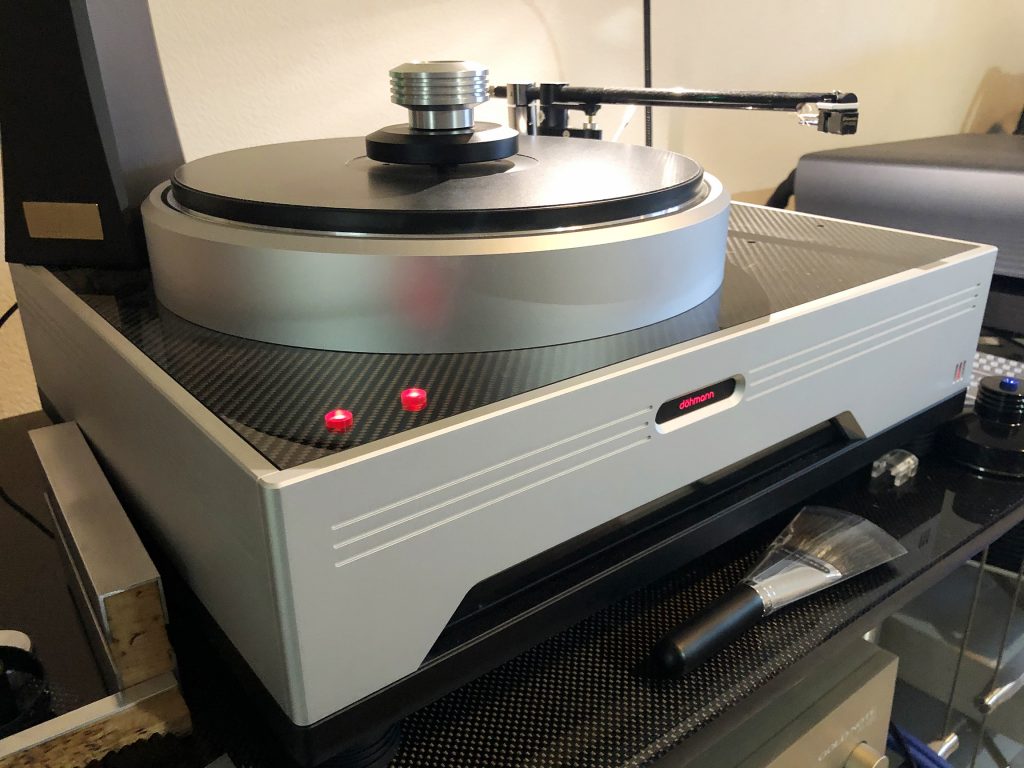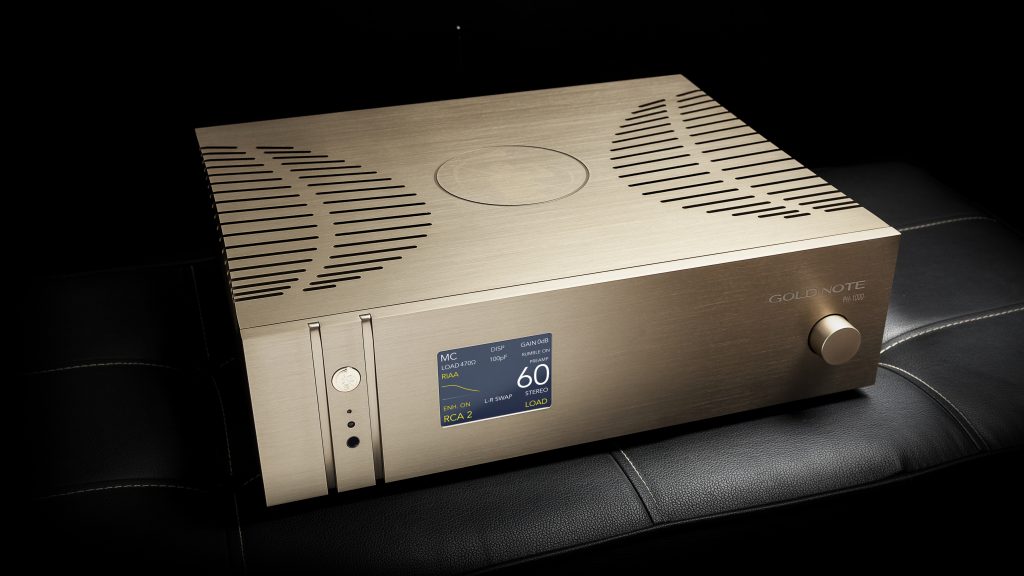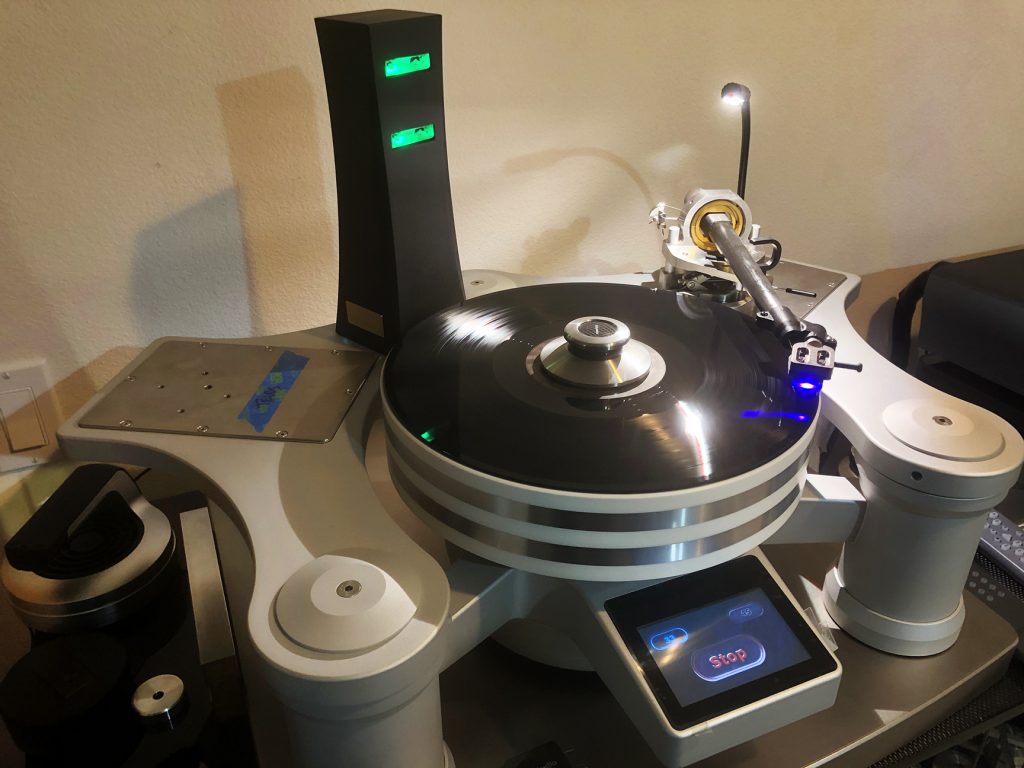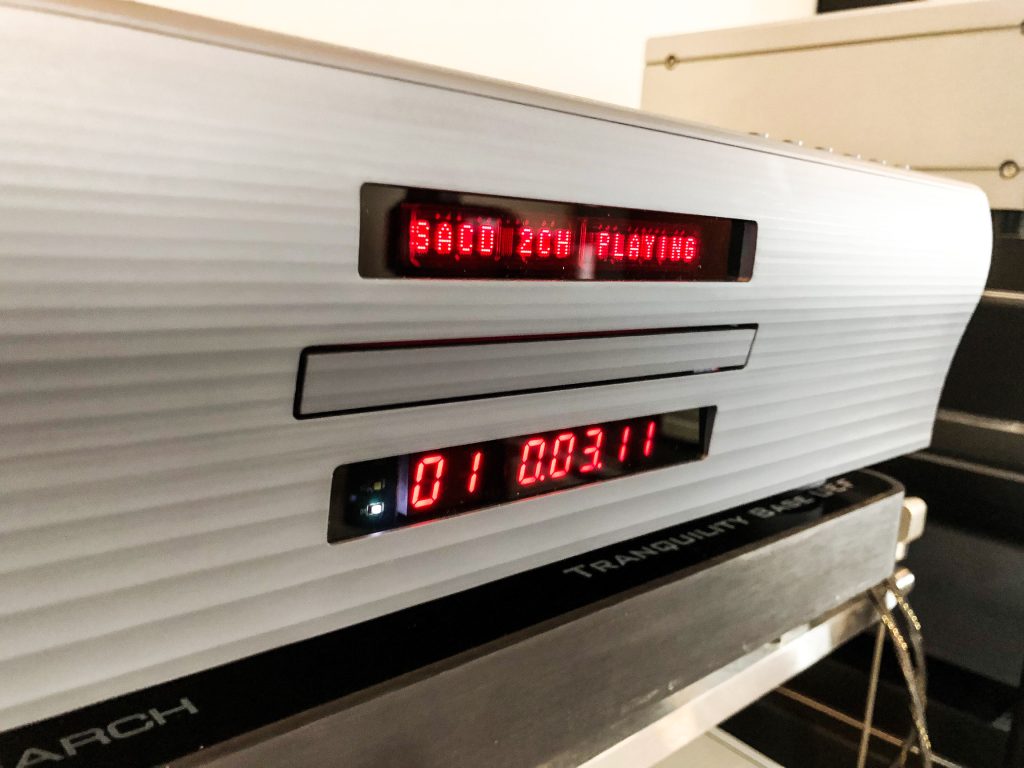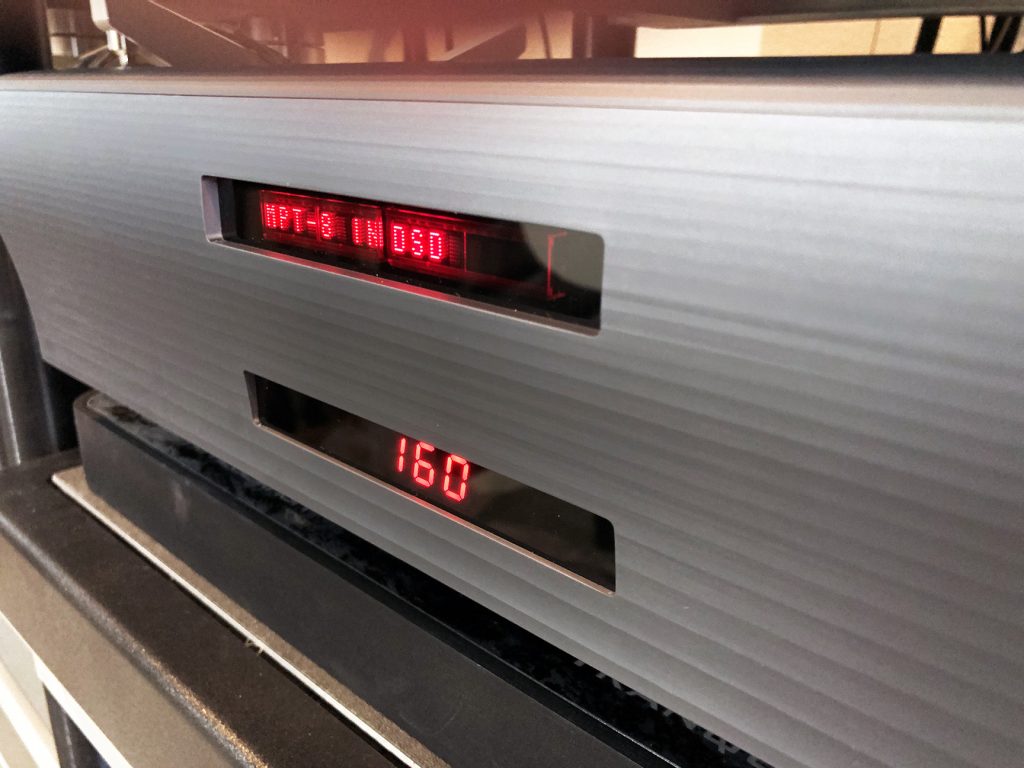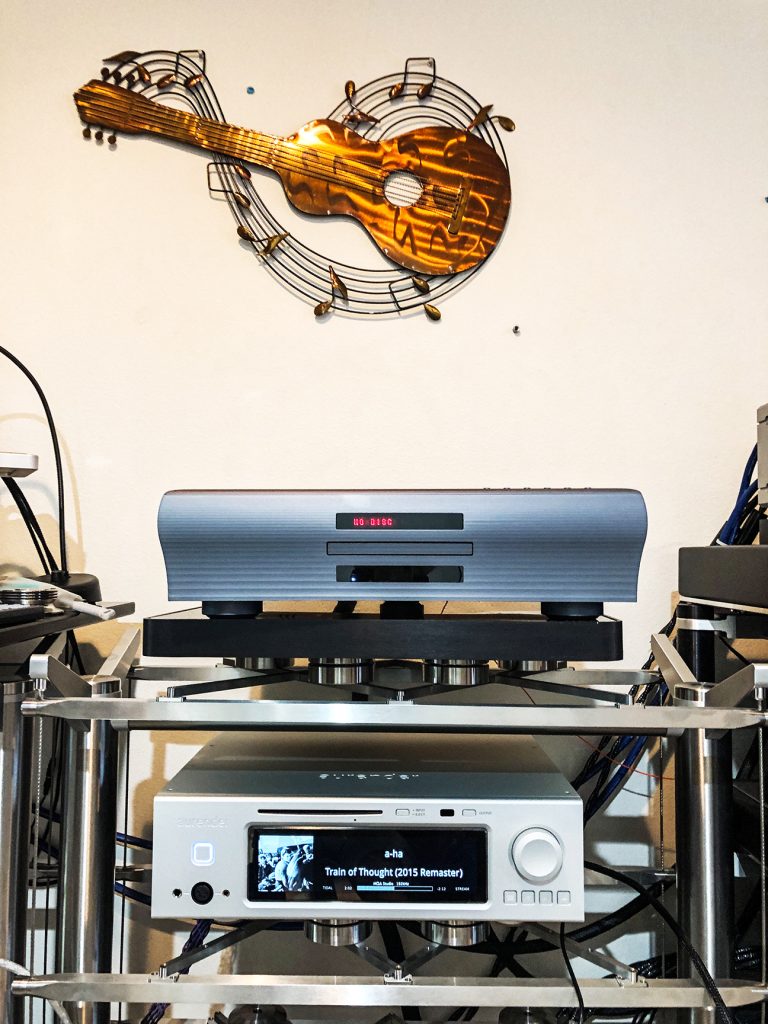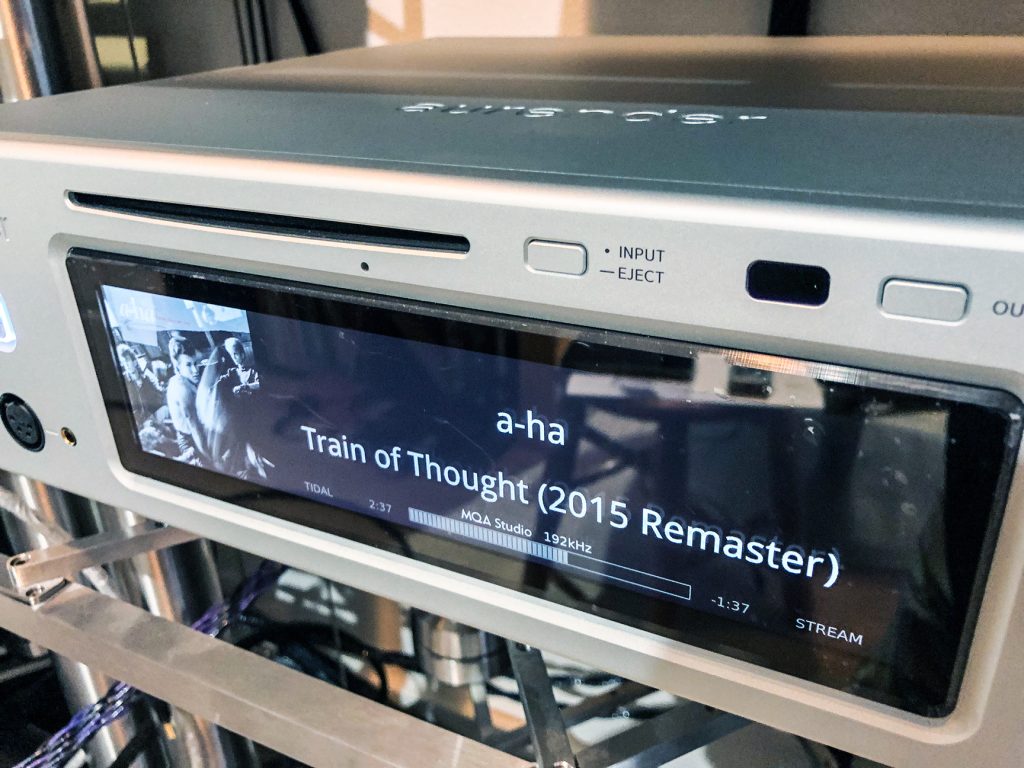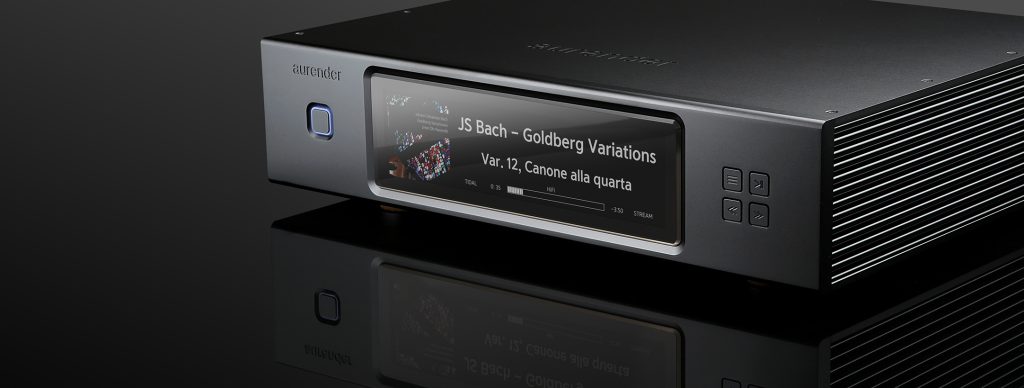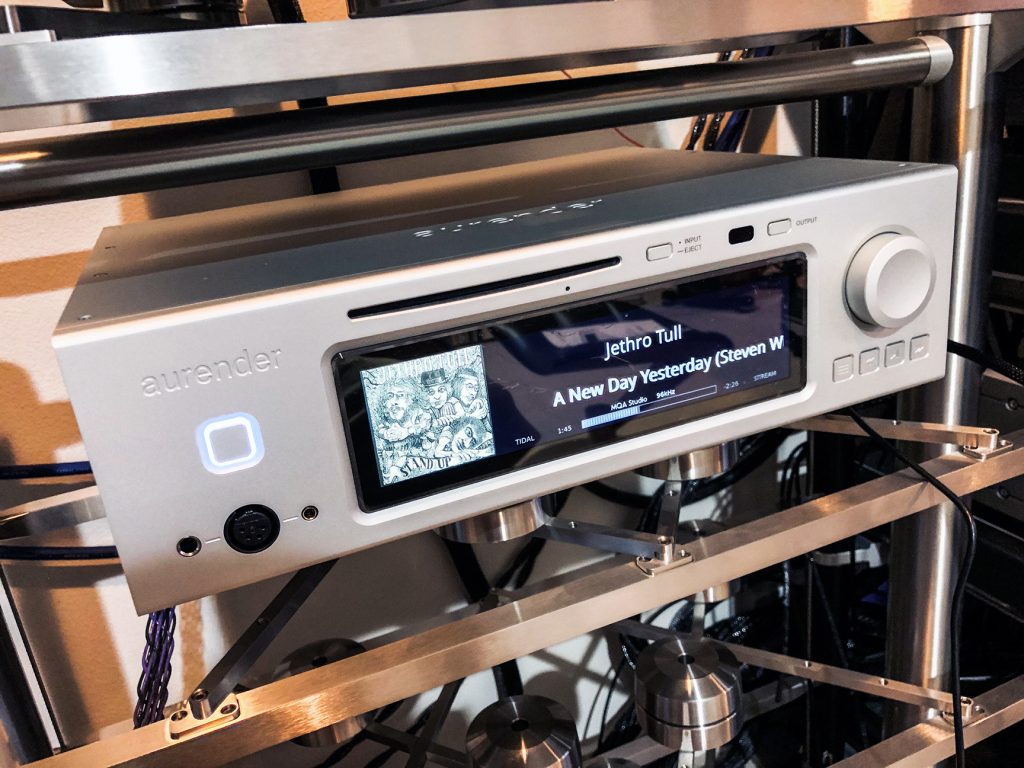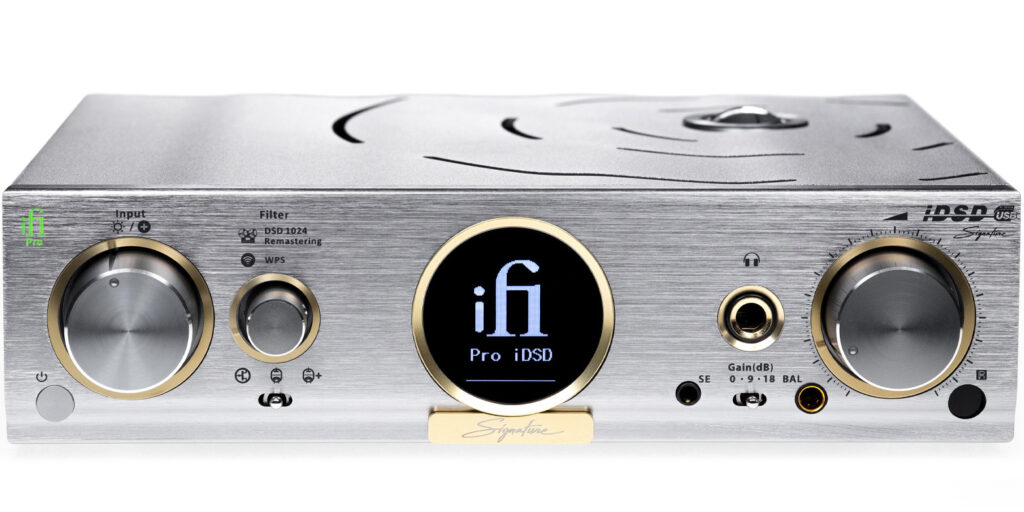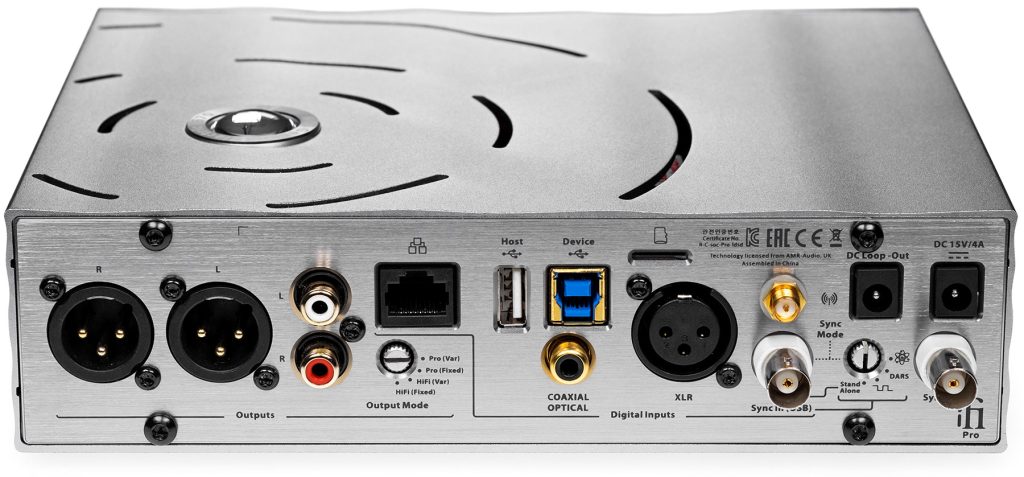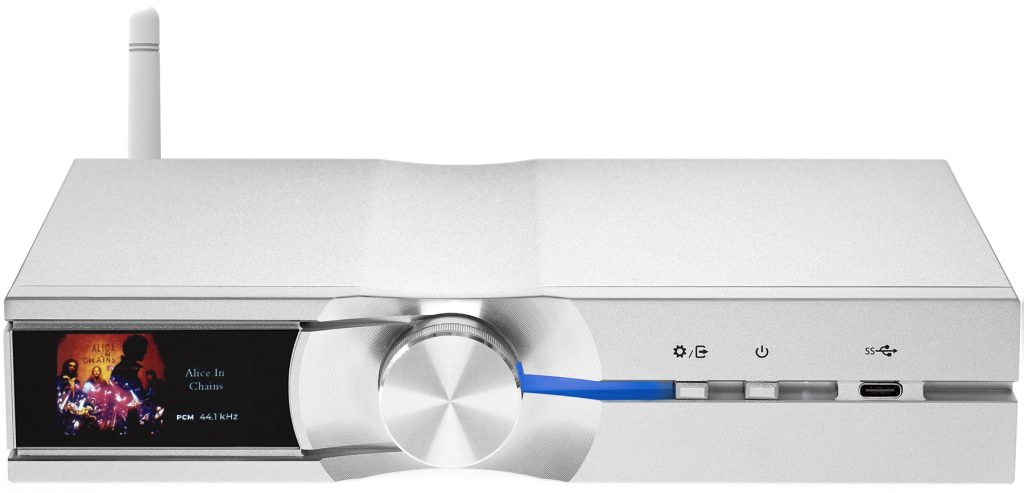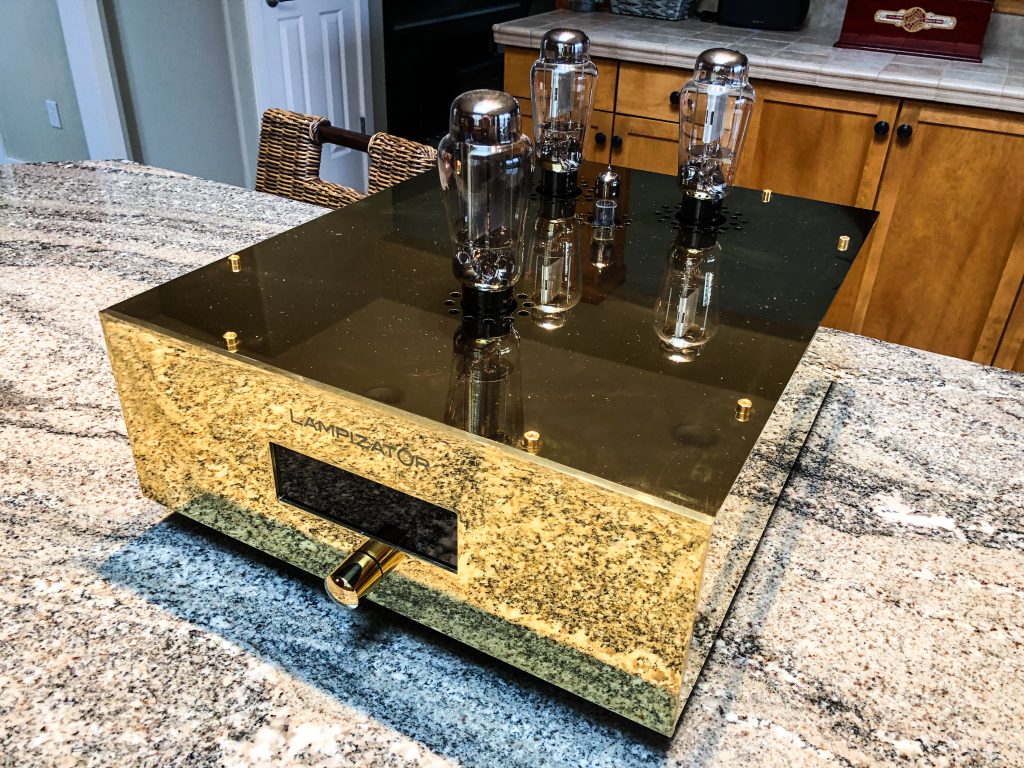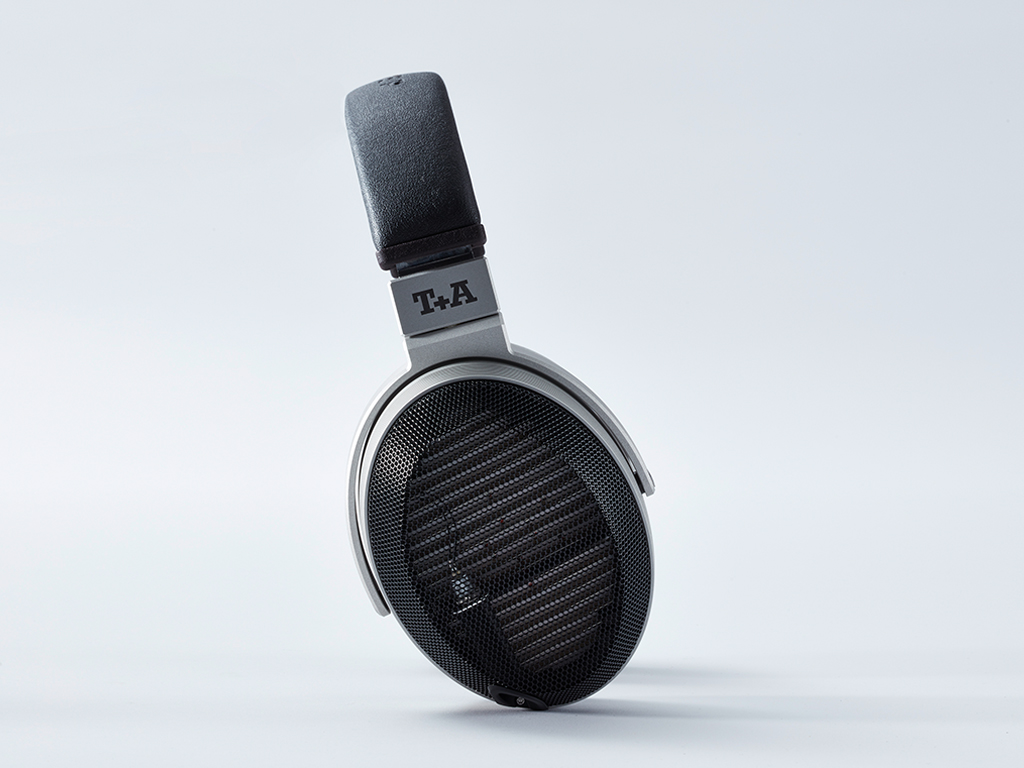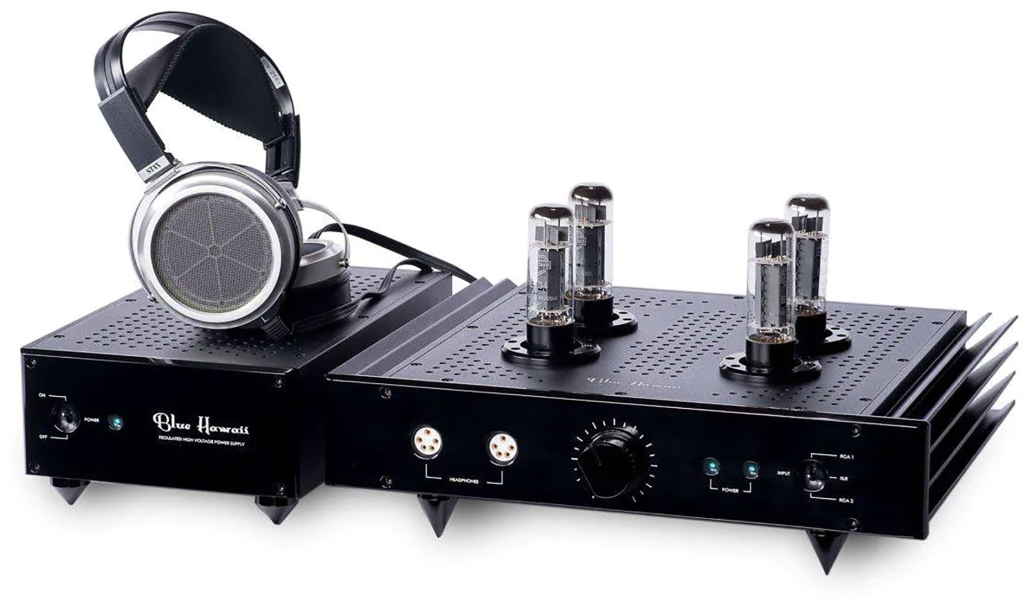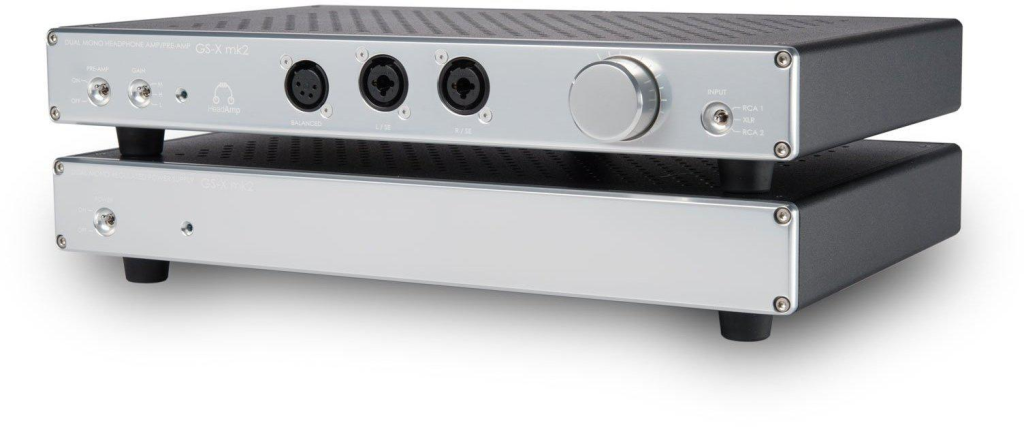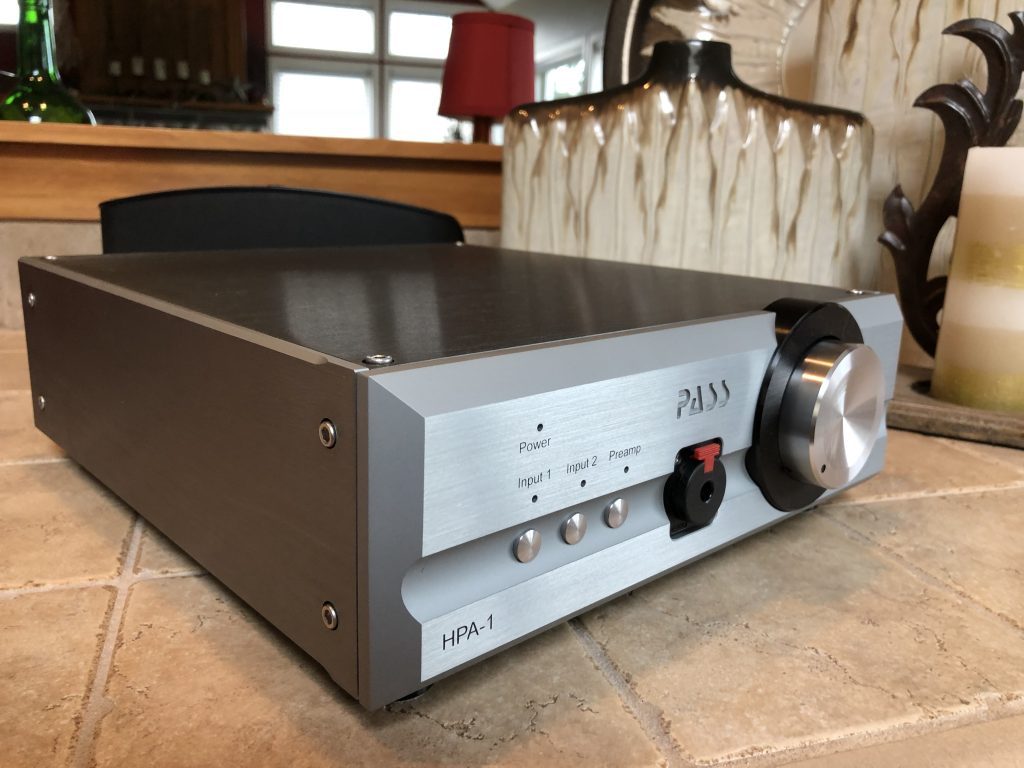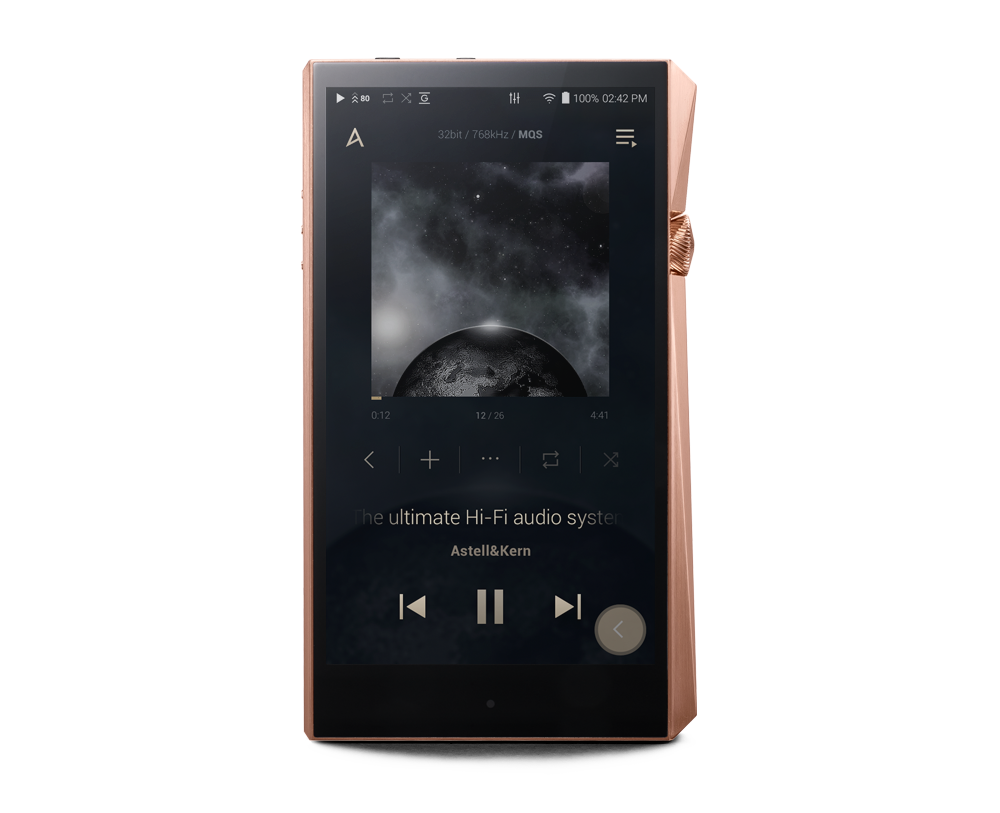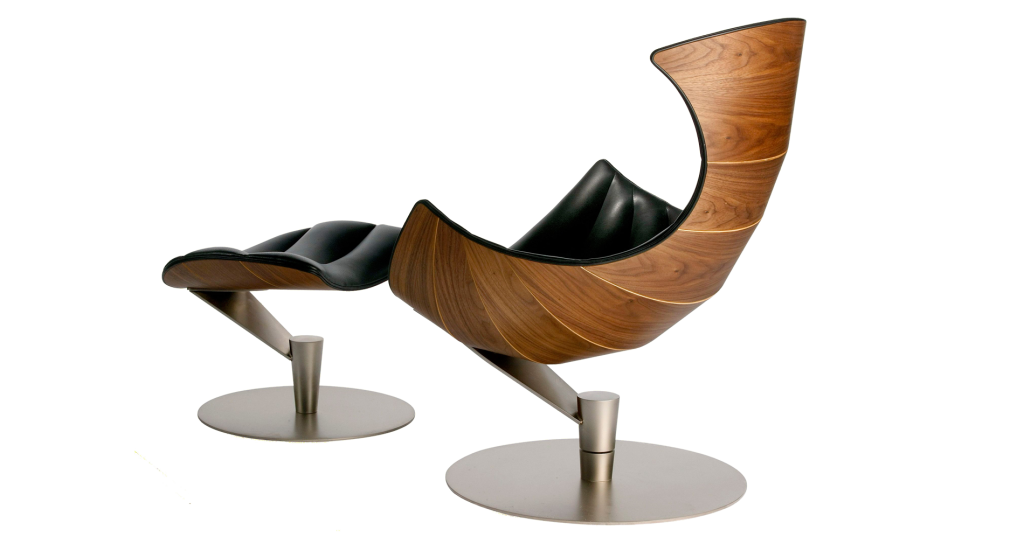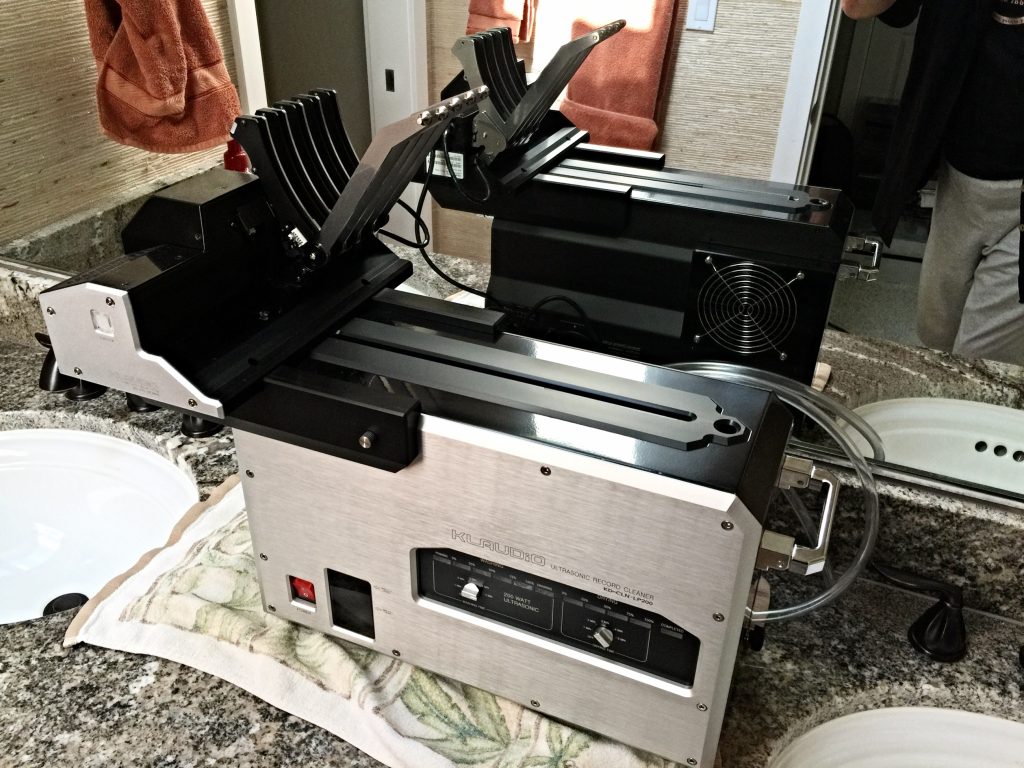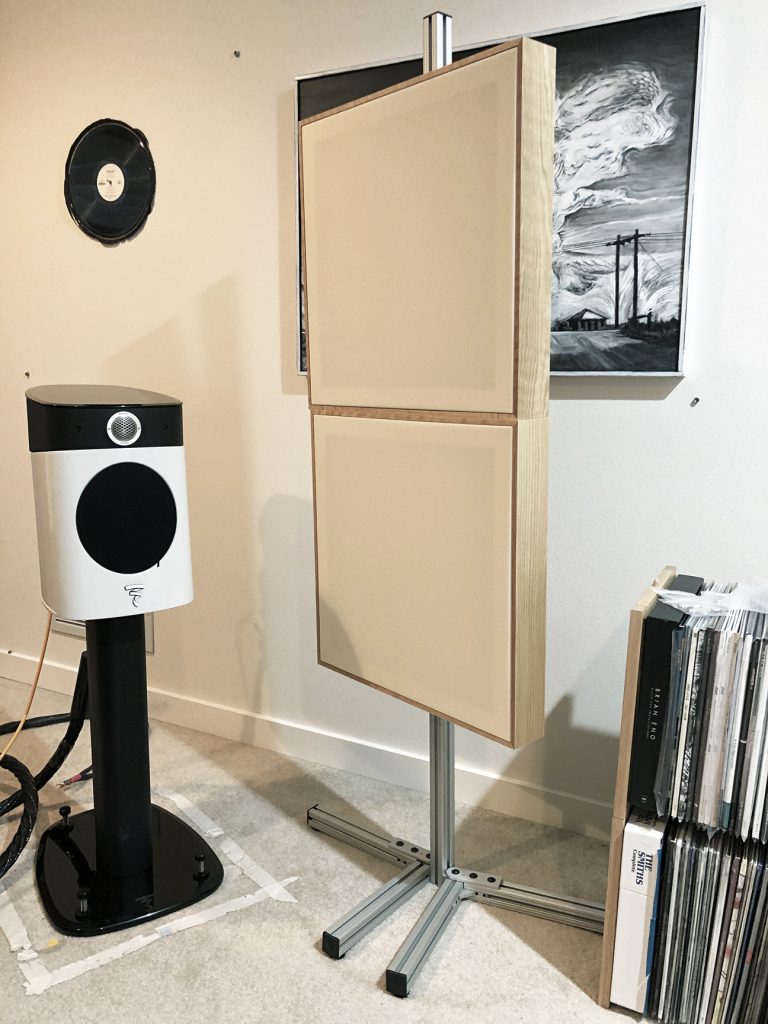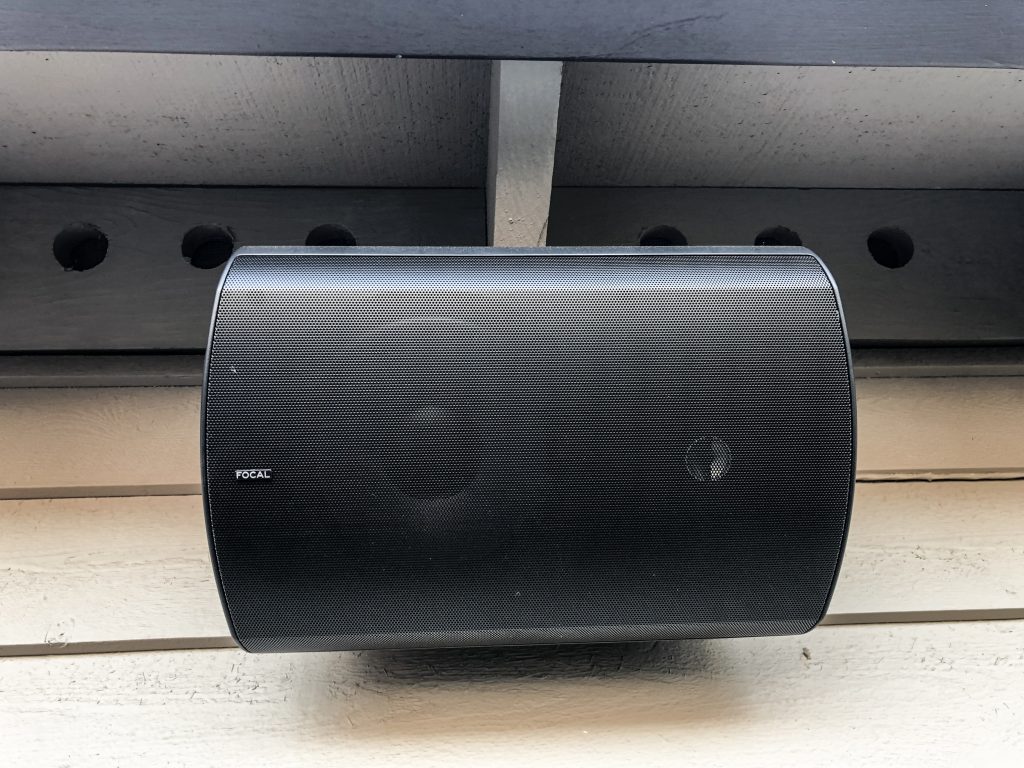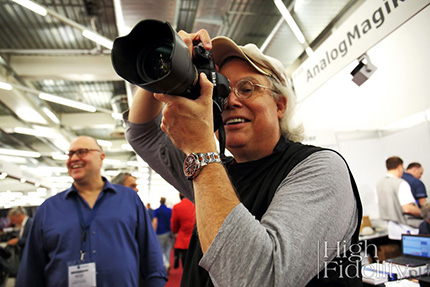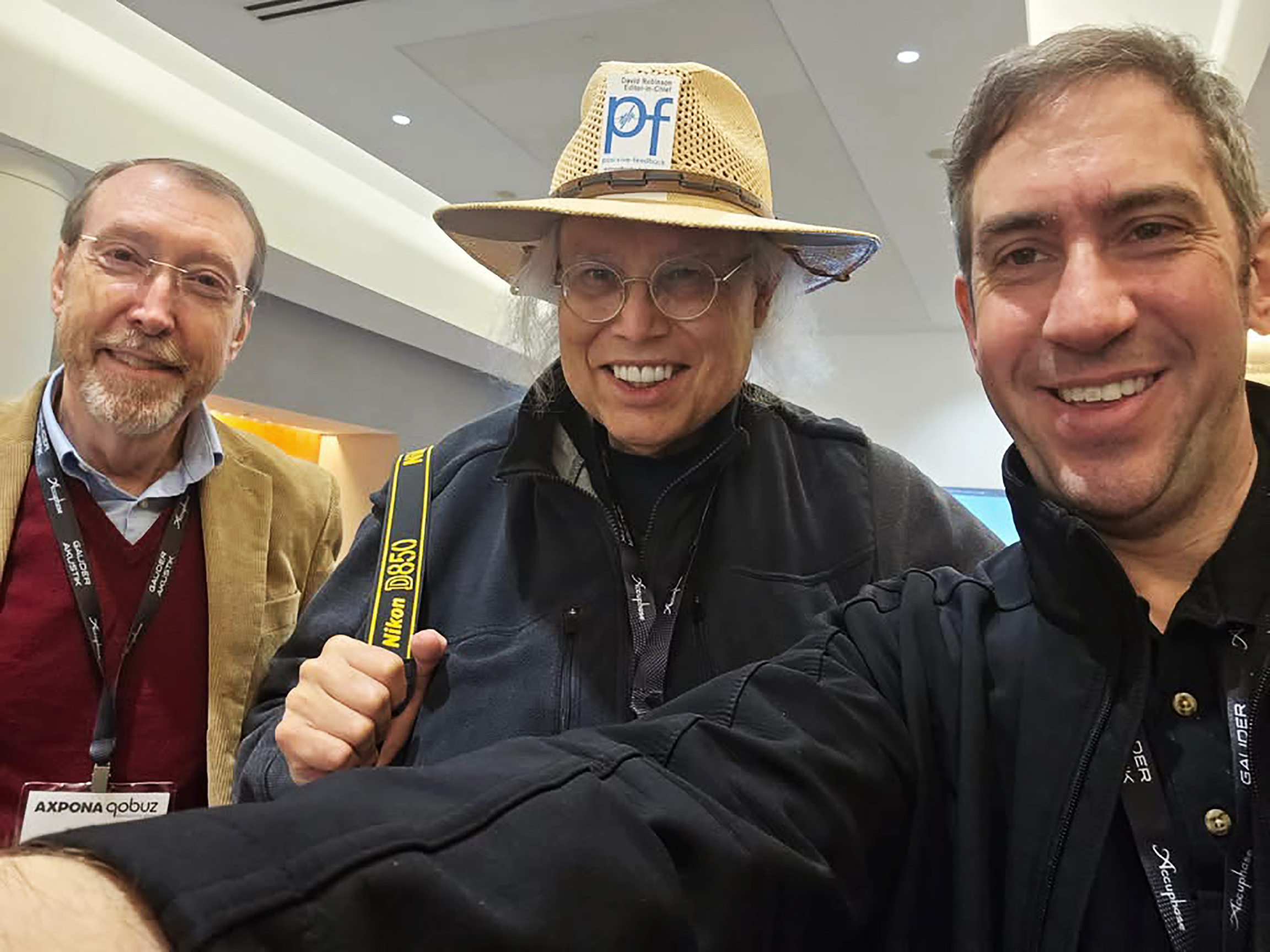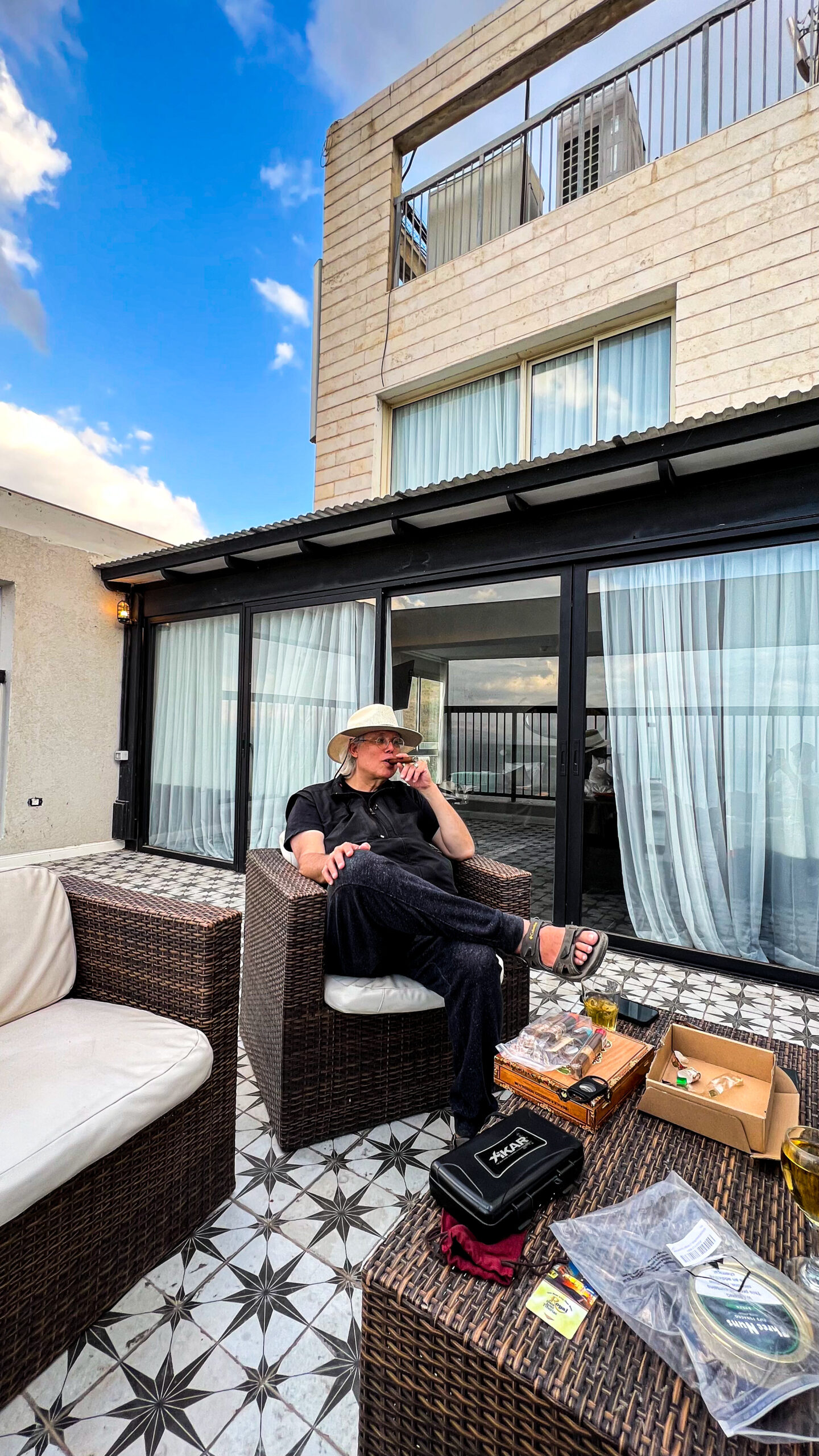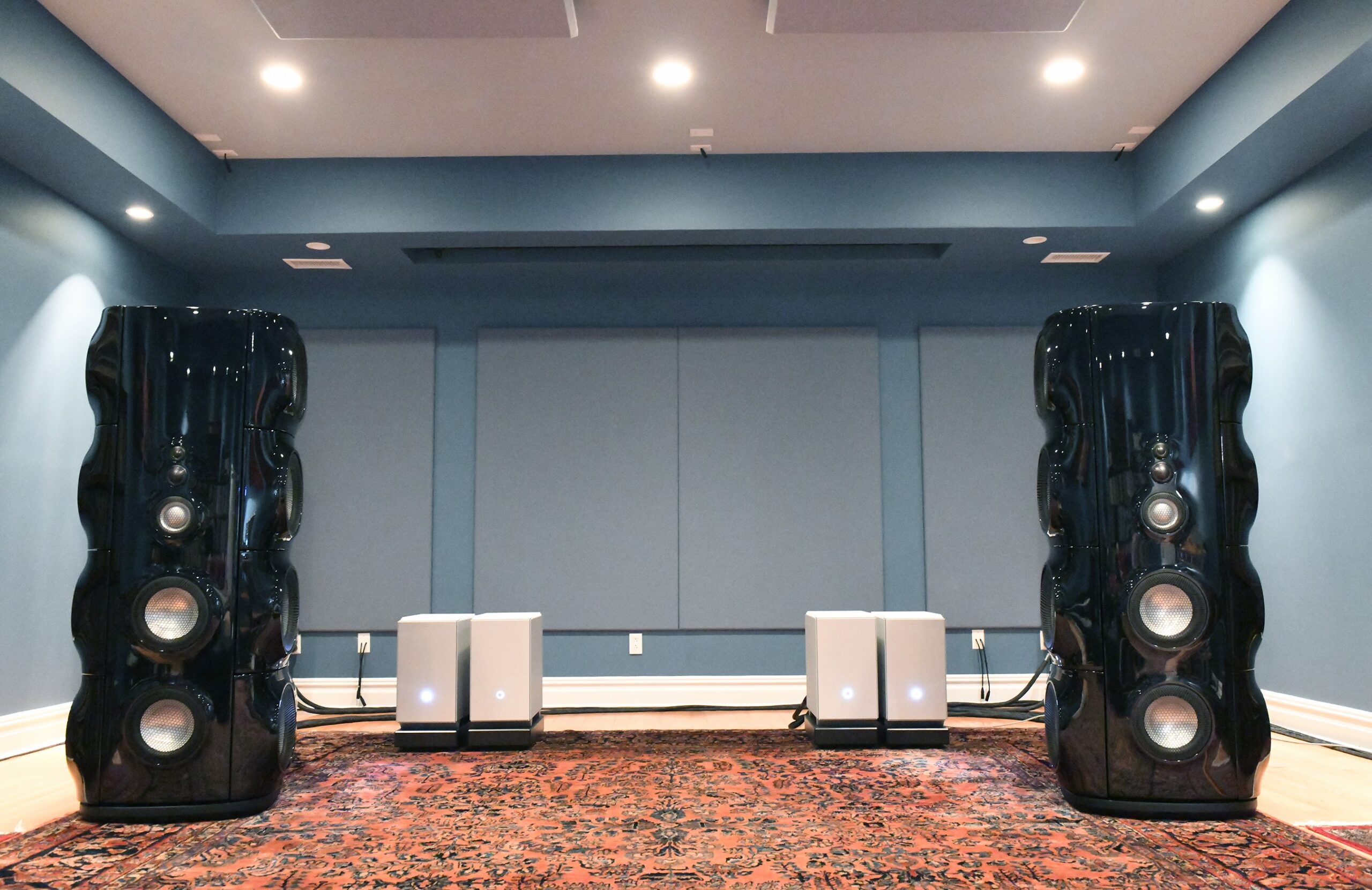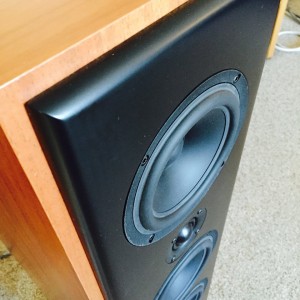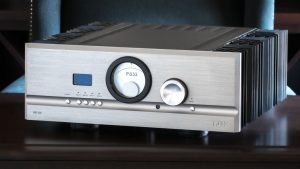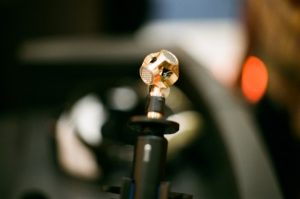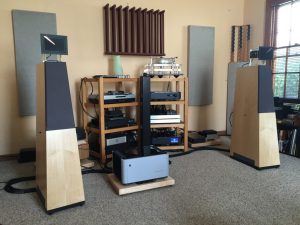
Ye Olde Editor contemplating in the fall of 2019. Photograph by John Robinson; image processing by David W. Robinson
Time for Part the Third of my Brutus Awards for 2020...
Merrill Audio Christine Reference Preamp
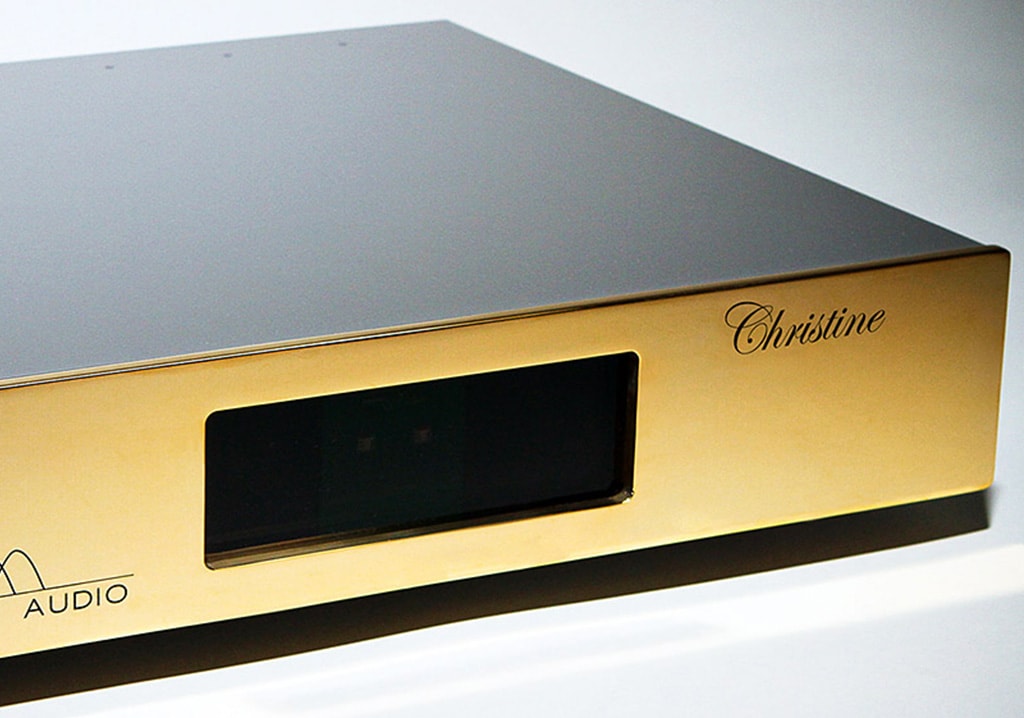
Image courtesy of Merrill Audio
Anyone who follows my "Impressions" series over the many years now knows that I have an exceptionally high regard for the audio designs and product lines coming from Merrill Wettasinghe of Merrill Audio. Merrill has a real magic touch when it comes to making audio electronics that are crystalline and transparent, marvelously detailed, and extraordinarily dynamic. And all of this without losing touch with the musical soul that all great performances and recordings embody.
In fact, I commented on Merrill's brilliant Element 118 Reference Monoblock Amplifiers on no less than three different occasions…something of a record for me. You'll find them HERE, THERE, and OVER YON. The startling transparency, warp-like quickness, dynamics, and utter clarity of the Element 118 was the stuff of fine audio dreams.
This year, Merrill was kind enough to send along his Christine reference preamplifier to go with the second coming of the Element 118 monoblocks. It was an irresistible opportunity to hear the synergy of these two designs. I was expecting that the tandem would be remarkable, along the lines of the audio virtues listed above. (For specifications on the very lovely Christine, see HERE.)
And I was right. The qualities that had made me love the Element 118 monoblocks were fundamentally reinforced by the Christine. An all XLR design, the Christine works hand-in-glove with its big brother monos to produce "just the notes, ma'am." With the Wolf Audio Systems Alpha 3SX partnered with the brilliance of either Ideon's The Absolute DAC or aqua acoustic's Formula xHD DAC (see below), cabled with Merrill Audio XLR cable, and flowing to the Raidho TD 3.8 loudspeakers courtesy of Synergistic Research SX loudspeaker cables, the results with the Christine were deeply satisfying. There seemed to be no disjunction in the character of the musical presentation of the Element 118s; instead, I had a very convenient remoted-controlled (Apple Remote) gain control that was absolutely in soul-sync with its Big Bros downstream.
With the Wolf Audio Systems Alpha 3SX accessing our new QNAP NAS with RAID 5, and many terabytes of music at hand, I have been able to evaluate the quality of the Christine with a very wide range of music, mostly DSD, but with a solid proportion of PCM, as well. The results were uniformly spectacular, with the Christine revealing the glory of great recordings…and also the weaknesses of the less-then-you-might-wish stuff. True reference performance; real revelation of what is.
I've dealt with a megaton of preamps over the past 32 years, in the light of which I can say that Merrill Audio's Christine is a true front-rank masterpiece. More surprising, it sports a relatively reasonable (in audiophile terms) retail price of $12,400.
If you're looking for the sort of fine audio virtues that I prize and listed above, and are operating in this budget range, then you simply must put the Merrill Audio Christine on your short list of reference preamps to preview or try.
Quick! A Brutus Award for the lovely Christine!
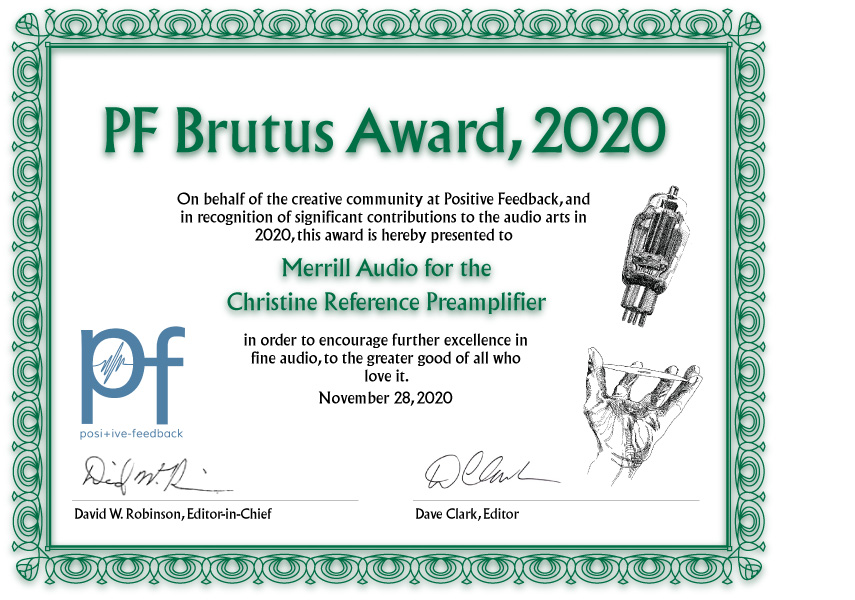
aqua acoustic quality Formula xHD Rev. 2 DAC
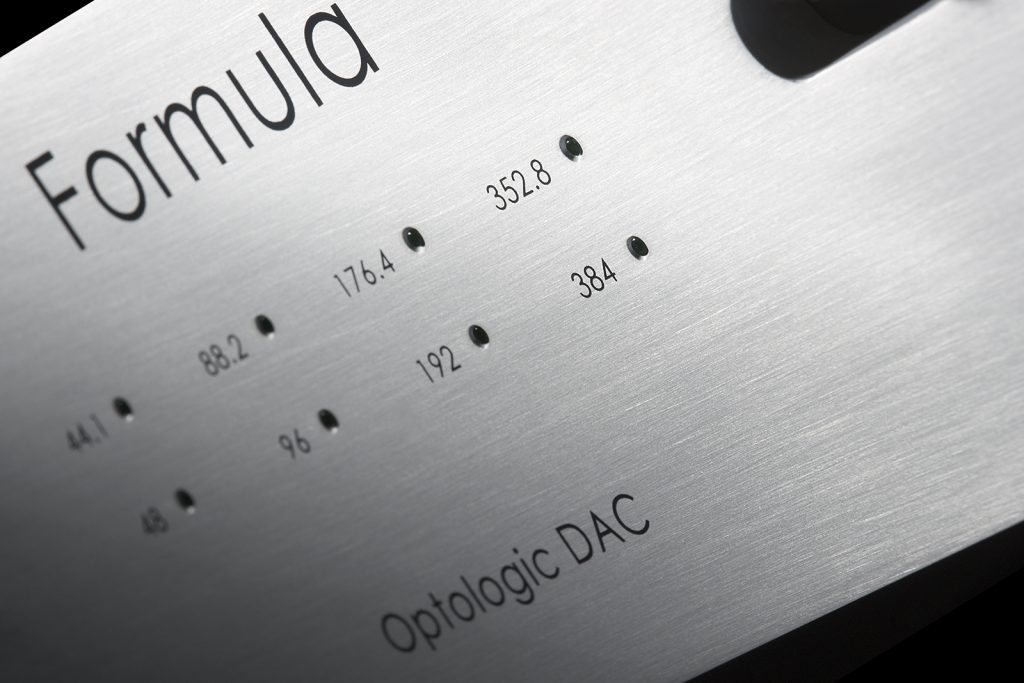
Images courtesy of aqua acoustic quality
aqua acoustics is a brand that I have known of for a while, but it wasn't until mid-September that a review sample of their Formula xHD Rev. 2 was gotten my way from the good folks there. That didn't leave enough time for a full review this year, given all the other projects ahead of it in my queue, but it did give me enough elbow room to slip it in right behind Ideon's The Absolute DAC, and spend some weeks with it, as the end of the year closed in.
The Formula xHD Rev. 2 DAC specifies as quite versatile and capable (see the aqua acoustics website HERE). Support for up to 768kHz PCM, and up to DSD512 in Native Mode is available via the USB port, which is what I used exclusively during my time with the Formula xHD Rev. 2. This is all done with an ultra-high-performance resistor ladder and an FPGA array, without using digital filtering. No Delta-Sigma here; no oversampling.
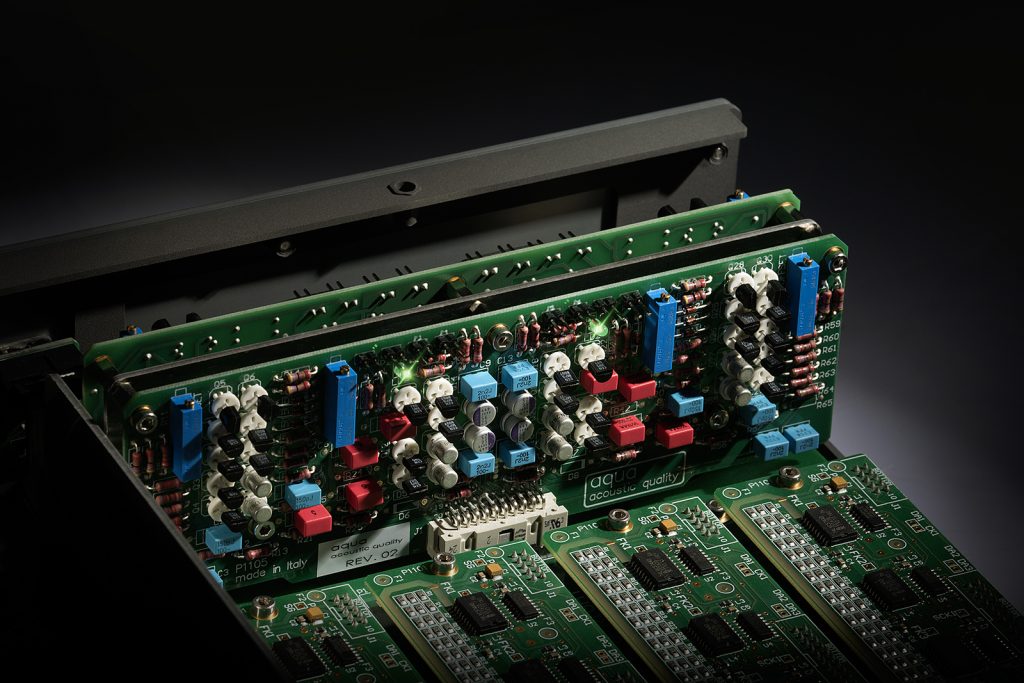
Using resistor ladders and FPGA is a very demanding approach, requiring fanatical care in getting the design, the software and the components right. It is also expensive. As usual, both the power supplies and the analog output sections must be just so to pull the very best out of a given DAC design.
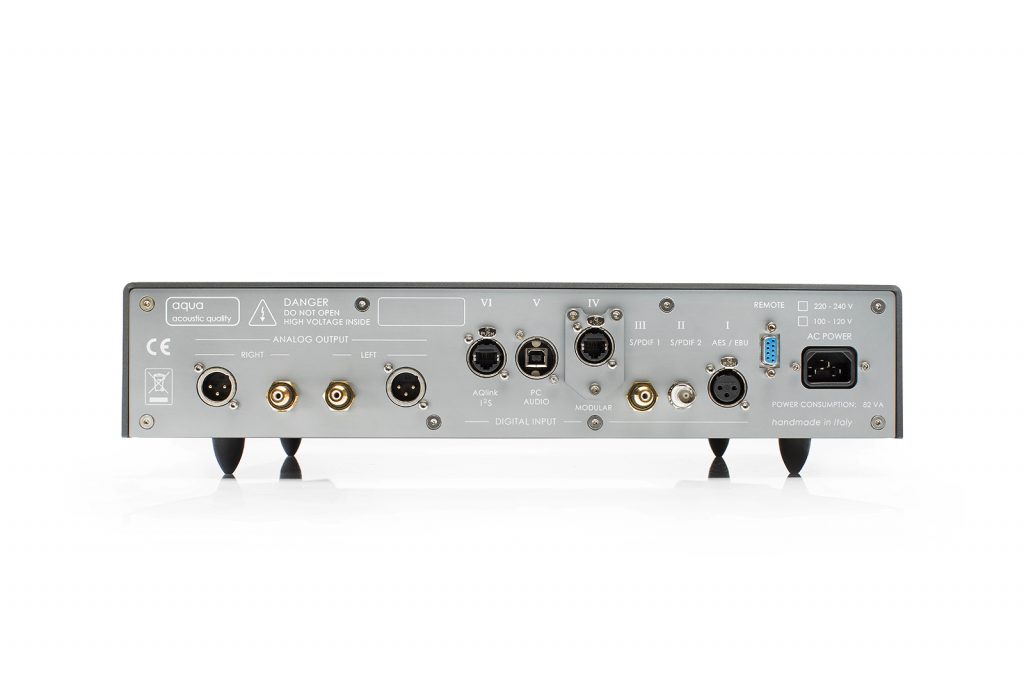
I adjudge the rear I/O set of the Formula xHD Rev. 2 to be a very solid lot. Left to right in the image above are balanced and unbalanced right channel output, with ditto for the left channel; inputs for the AQlink for I2S, USB for PC Audio, Ethernet, S/PDIF 1 (RCA), S/PDIF 2 (BNC), and AES/EBU. There's an RS-232 input for remote wired operation, and IEC power in. The unit has its own isolation feet, but you can experiment with your own devices, of course.
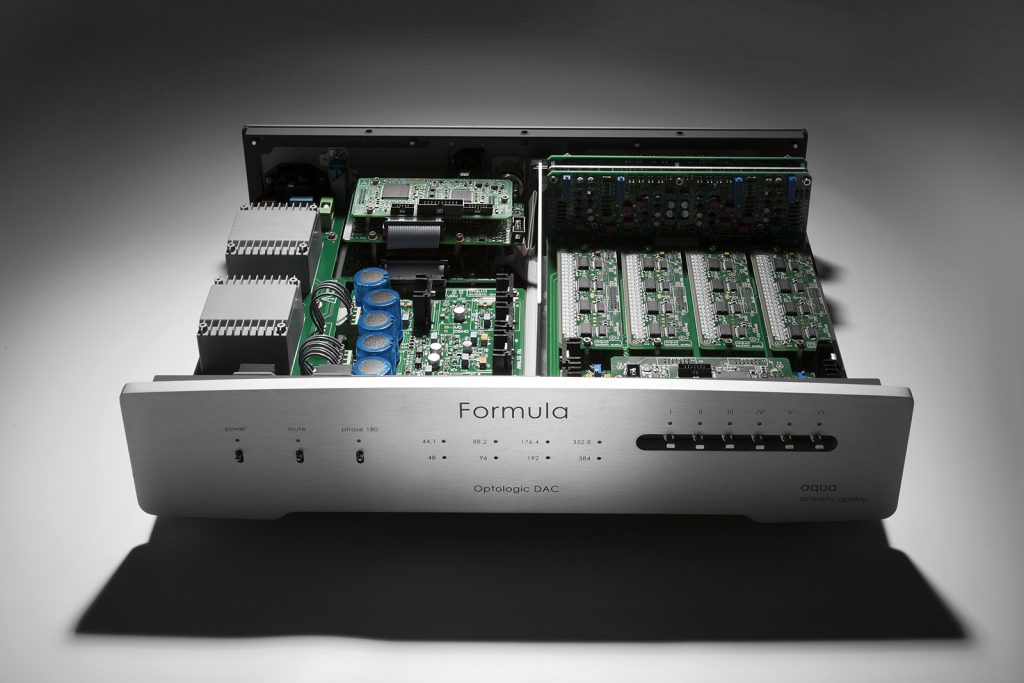
My evaluation chain included the Wolf Audio Systems Alpha 3SX streamer/music server with its optimized JRiver Media Center as the playback system, being fed by the QNAP 1273U NAS with RAID 5 with 84 TB of effective storage (after subtracting for RAID 5 overhead). Joe Parvey of Wolf Audio Systems was able to remote in for the installation and tweaking of the aqua driver in Windows 10. With many terabytes of music storage, it was easy to try quite a lot of DSD and PCM, even in the more limited time that I had in the final season of the year for the 2020 Brutus Awards.
The cabling was as it was for Ideon's The Absolute (Merrill Audio and Synergistic Research), Walker Audio's Velocitor (latest revision), with the same Critical Mass Systems double-wide rack system and filtering shelves. Nothing to complain about there.
I had no expectations of the audio performance of the Formula xHD Rev. 2 DAC, since I don't read much at all in other high-end audio publications. I don't want the conclusions of others to color my own impressions of a given component or system, and so avoid most other commentary on principle.
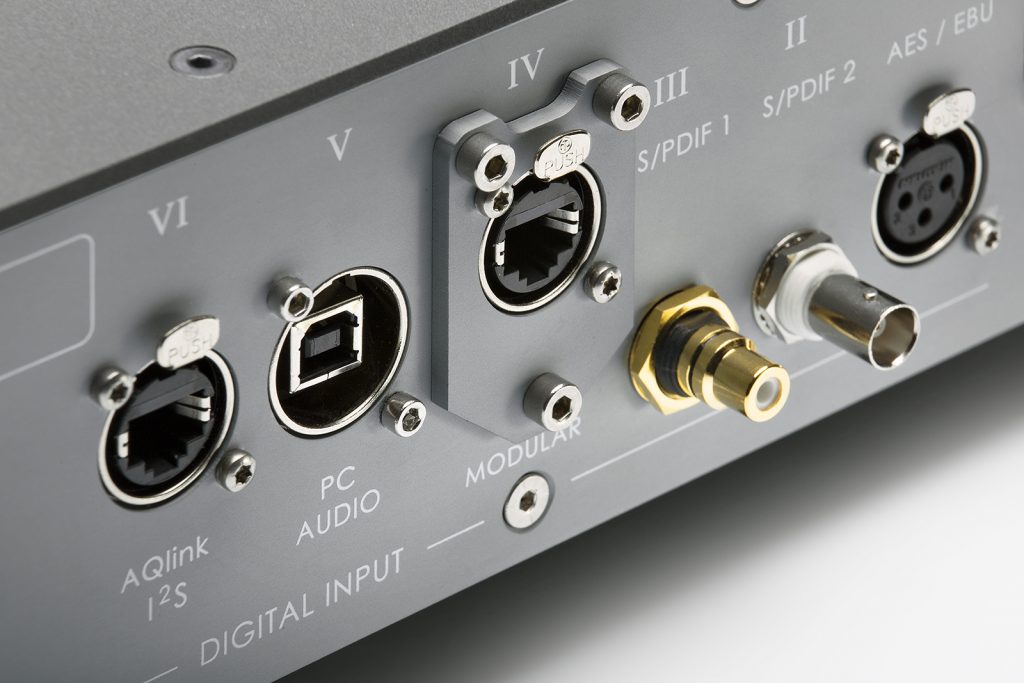
I needn't have been concerned, though. Once we had the setup completed and the drivers loaded, the Formula xHD Rev. 2 performed like a champion. I don't know if this review sample had much time or burn-in on it, but right out of the box it showed that it belonged in the first rank of DACs. I was taken by its sense of presence, its presentation of detail without being "analytical" or cold, and its ability to handle huge swings in dynamics. The no filtering/no oversampling plus FPGA is showing itself to be a powerfully credible approach to digital sound reproduction…I'm very impressed.
Certainly, if there were any flaws in its operation, the associated Merrill Audio electronics and the Raidho TD 3.8s would have made them obvious. I heard nothing that would cause me to hesitate or footnote its abilities. It was smooth and reliable from the beginning, and has remained so to the present moment. A true joy to listen to, in all music formats and resolutions.
If you are in the price range of the Formula xHD Rev. 2 DAC ($16,900), you'll definitely want to give it very serious consideration. These folks are doing something very right here.
And so, I am compelled to give the aqua acoustic quality Formula xHD one of my 2020 Brutus Awards, and that with surprised pleasure.
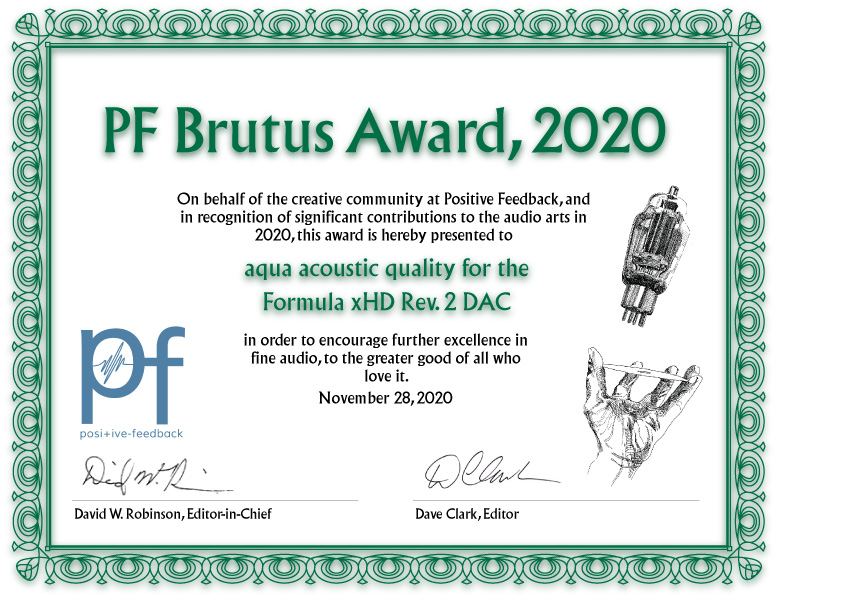
TARA Labs Omega Concerto SP speaker cables and the Zero Evolution XLR interconnects
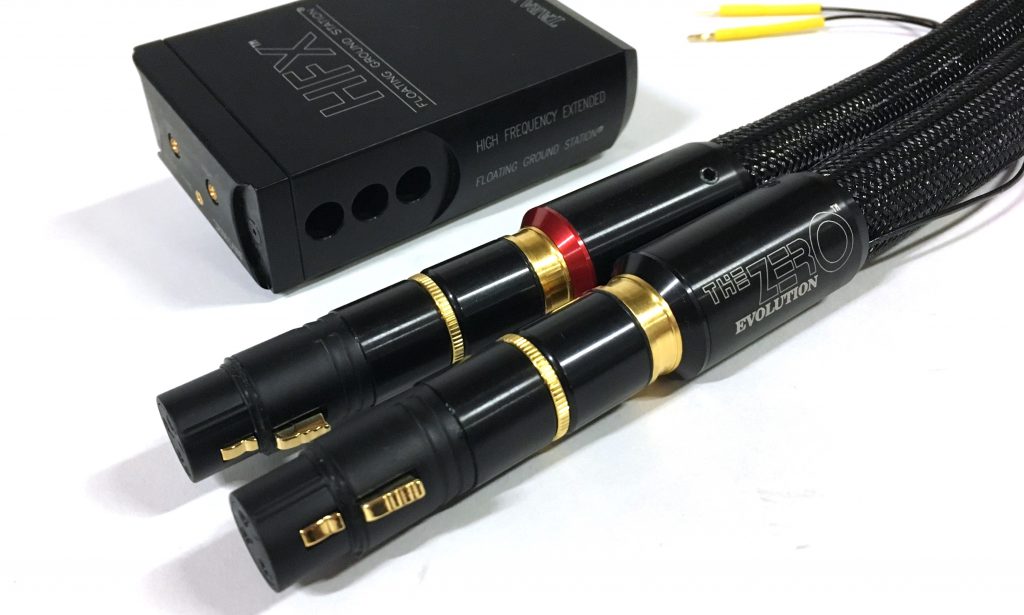
The TARA Labs Zero Evolution XLR Cables and their HFX Floating Ground Station. Images courtesy of TARA Labs
TARA Labs is a name in high-end audio cable design that I have known since it was founded in Oregon back in the 1990s. Devon Scott, a VP there, was kind enough to send me a pair of their Zero Evolution XLR cables earlier in the year, together with a pair of their Omega Concerto SP loudspeaker cables. While these are not their top-of-the-line cables, they do represent solid designs from TARA Labs, and were of interest to me for our reference office system.
The associated system that they were placed into included the exaSound DM dual-mono streamer/DAC, the iFi Pro iDSD DAC, and the Mola Mola Tambaqui DAC, being fed by local HDs and by our new Wolf Audio Systems QNAP 1273U NAS with RAID 5 on the LAN. The amplification included both the Vinnie Rossi L2i SE Integrated, and afterwards the ModWright KWH 225i Integrated. Power conditioning/distribution was via the Clarus Cables Concerto. A Furutech Booster Brace and several NCF Boosters were used for enhancing signal clarity and cable management. Megatons of mainly DSD (DSD64-DSD512 albums), plus selected high-resolution PCM. Streaming was from our accounts on Qobuz and TIDAL.
The Zero Evolution XLRs are surprisingly supple and light for their diameter. It was pleasant to work with them, which is not always true of high-end cables…some are like wrestling Anacondas. Unless you have unlimited space for elbow room to handle beasties like those, some cables will make you long for the days of compact and flexible interconnects.
On the other hand, the Omega Concerto SP loudspeaker cables aren't as lithe as the Zero Evolutions. The connectors are easy to use, though, and connected easily to our Focal Sopra One monitors.
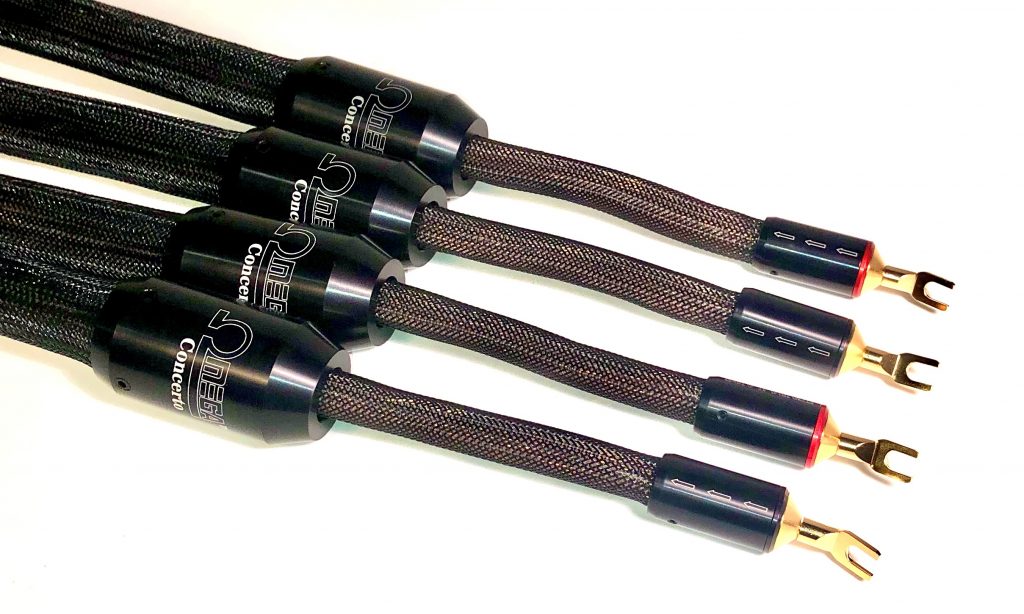
TARA Labs' Omega Concerto Loudspeaker Cables
Regardless of the source DAC, or DSD vs. PCM, the sonic performance of the TARA Labs cables was immediately impressive. I certainly do value transparency, clarity, detail, imaging, and soundstaging in fine audio, as readers of my "Impressions" series know across many years now. As usual, I don't know whether these cables were brand new or had some time on them. I was taken by the sense of dynamic quickness and airy transparency.
While I haven't heard nearly the entire TARA Labs line, these are definitely the best TARA Labs cables that I've heard so far. The cost isn't for the faint of wallet (see below), but if you're comfortable swimming in the deeper end of the pool, and value the qualities that I've mentioned above, then you should avail yourself of the chance to hear these remarkable cables. You can take advantage of the TARA Labs Loaner Program, which allows you a 14-day period to try-before-you-buy in your own listening room, just to be sure.
TARA Labs Zero Evolution, 1m, XLR or RCA - $18,900.00
TARA Labs Omega Concerto SP, 8ft., bananas and spades - $26,495.00
These are magnificent cables, and worthy of one of my 2020 Brutus Awards.
Ordered, and done!
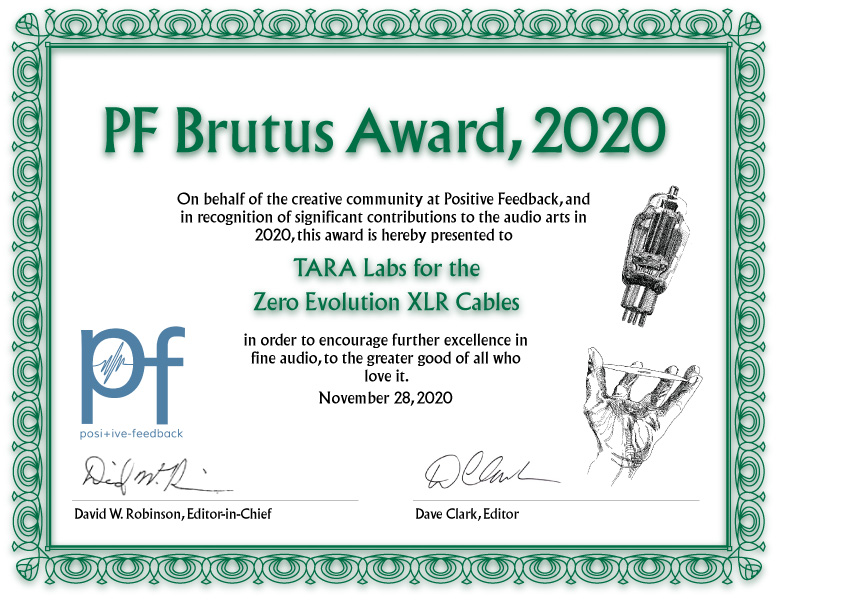
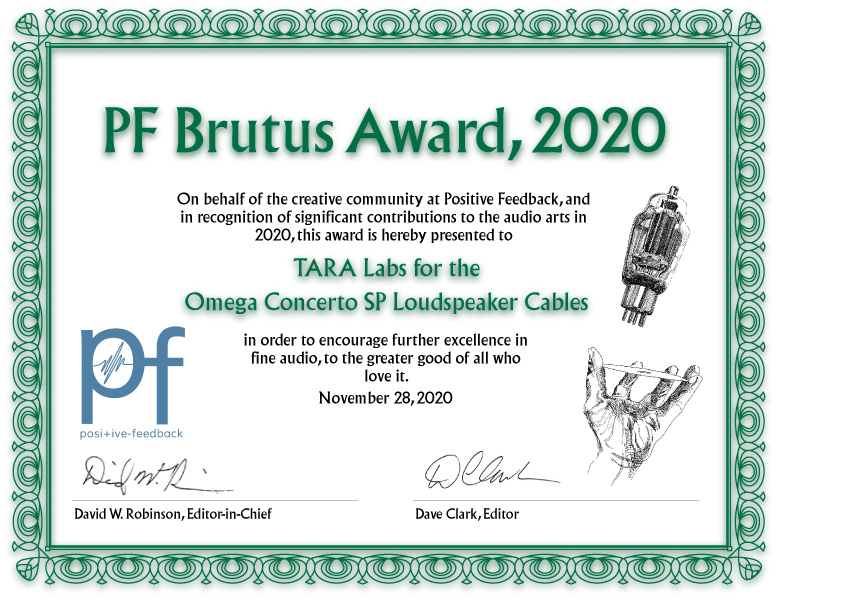
Focal Sopra One Monitor Loudspeakers
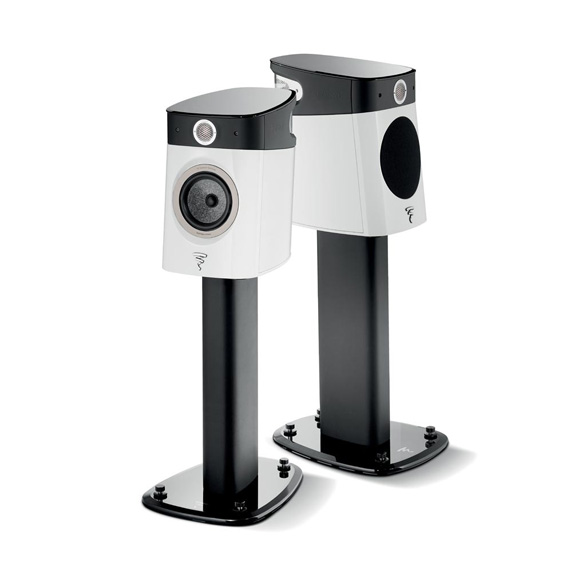
Focal's surprisingly fine Sopra One monitor loudspeakers in white, on their dedicated stands. Image courtesy of Focal
While on the subject of the TARA Labs cables above, I mentioned their happy synergy with our office reference system monitors, the Focal Sopra Ones. These compact speakers on their handsome stands with adjustable spikes are striking in appearance. Focal is notable for producing loudspeakers that are eye-appealing, as well as seductive to the ears.
Throughout 2020, I have used two loudspeaker systems in our reference office system: the previously mentioned 2020 Brutus Award winner, the GamuT Phi3-i, made in Denmark, and the French-made Focal Sopra One. Both have demonstrated superior monitor capabilities, each in its own way, and at different price points. In the case of the Sopra Ones with their dedicated stands ($9,990 per pair, plus $1,980 for the stands), we have quite an impressive array of performance characteristics.
The Sopra One specifications:
- Type: 2-way bass-reflex bookshelf loudspeaker
- Speaker drivers: 6 1/2" (16.5cm) "W" bass midrange with "TMD" suspension, "NIC" motor 11/16" (27mm) "IHL" Beryllium inverted dome tweeter
- Frequency response: (+/- 3dB) 45Hz - 40kHz
- Low frequency point: - 6dB 41Hz
- Sensitivit:y (2.83V/1m) 89dB
- Nominal impedance: 8 Ohms
- Minimum impedance: 3.9 Ohms
- Crossover frequency: 2,200Hz
- Recommended amplifier power: 25W – 150W
- Dimensions (HxWxD): 1647⁄64x1063⁄64x1519⁄32" (425x279x396mm)
- Loudspeaker weight: 41.89lbs (19kg)
- Dedicated stand weight: 40.78lbs (18.5kg)
I was able to use the Sopra Ones with both the Vinnie Rossi L2i SE Integrated and the ModWright KWH 225i Integrated, which two have already received Brutus Awards from me this year. Sources included the Mola Mola Tambaqui DAC, a Brutus Award winner from 2019, reviewed HERE; the exaSound DM Music Server/streamer/DAC, another of my Brutus Award winners; and the iFi Pro iDSD DAC…a new Brutus Award winner here in 2020.
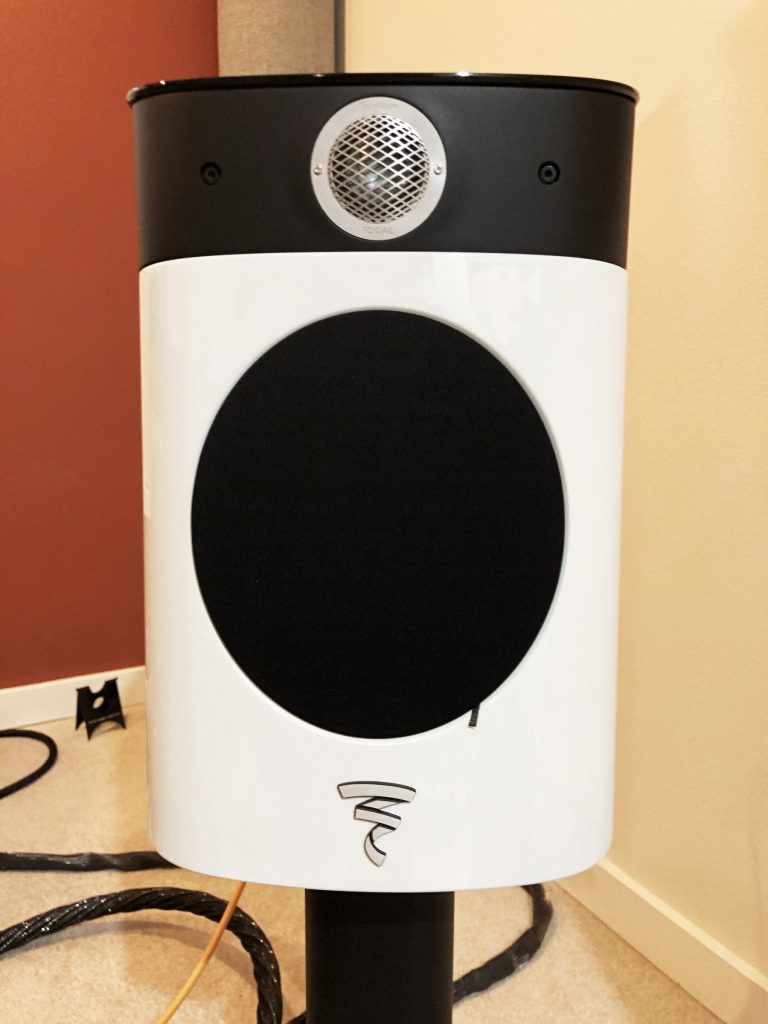
Image and image processing by David W. Robinson
Regardless of the source, the digital music format, or the integrated, the Focal Sopra Ones filled our office listening room with nicely detailed, strikingly well-balanced music. While it was true that the final bass octave isn't there…which is generally true of all monitors…I really didn't have a sense of being robbed at all. The low frequency extension was pretty remarkable in this room. Your mileage may vary, of course, but I think that you'll be quite impressed with the sonic foundation of the Sopra Ones.
The midrange was clear, clean, and nicely uncolored; just what you want in a monitor loudspeaker. But when it came to the upper frequencies…well, these were stellar! The inverted dome Beryllium tweets, with their 40kHz upper reach, provided an outstanding spaciousness and airiness that made me smile time and time again. High-resolution digital…especially DSD128, DSD256, and the iFi's DSD512…shimmered and sparkled with remarkable transparency. I like! A lot!
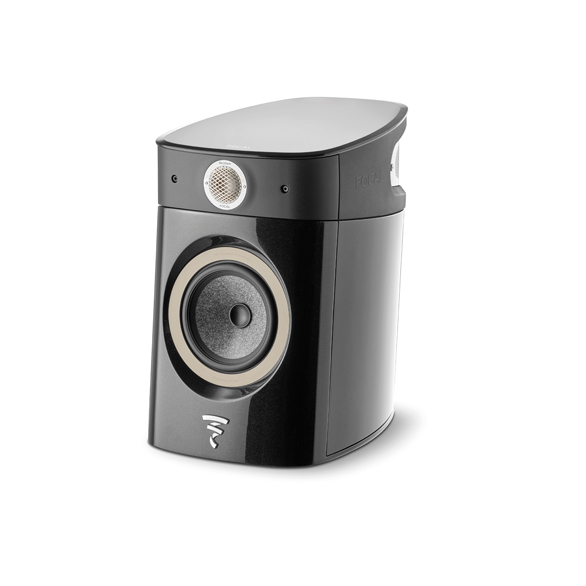
But I didn't stop there. For several weeks I also ran the Sopra Ones in our main stereo listening room, curious to hear their performance with other electronics. PASS Labs Xs reference preamp was on the analog side of things, taking a feed from the Wave Kinetics NVS Turntable/Durand Tosca Tonearm/DS Audio DS Master1 Optical Cartridge with its dedicated EQ/Phono Amp. The digital side saw the Playback Designs MPT-8 Transport with Stream-X streaming, and the MPD-8 DAC; there was also the Aurender A30 all-in-one Music Server with 10TB internal storage and capacitor-based BBU/Streamer/CD ripper/Headphone Amp/DSD512 DAC. All of these source components/electronics are Brutus Award winners. Ditto the van den Hul Extenders hooked up to the Sopra Ones. Amplification was supplied by a pair of Audionet MAX monoblocks, on their Critical Mass Systems rack. Cabling was by Synergistic Research's SX line of interconnects and power cables, and the new PowerCell SX power conditioner and distributor. A set of the Stillpoints Apertures provided first sonic reflection point control.
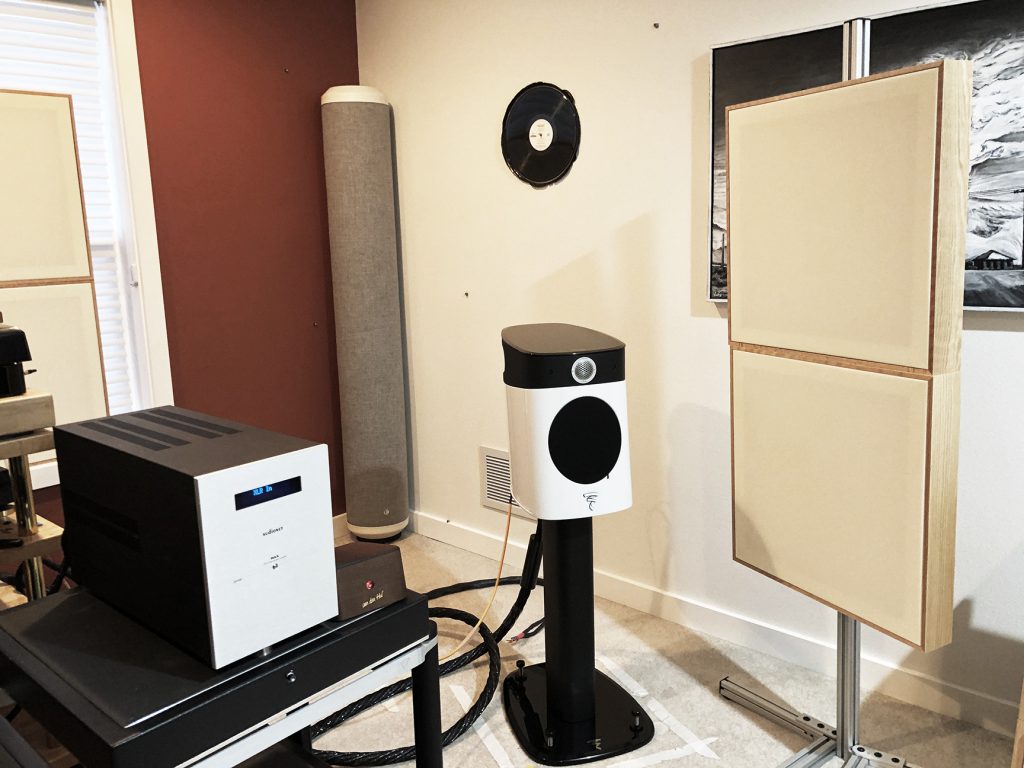
The Sopra One in PF Central's main reference stereo listening room. Image and image processing by David W. Robinson
The results were pretty amazing, frankly, well beyond what I was expecting. Given that the MAX monoblocks are very powerful amps…400 watts per channel into the nominal 8 ohm impedance of the Sopra Ones, and running 700 watts per channel into the lowest impedance…I did have to be quite careful with playback volume, since the Sopra Ones are rated at only 150 watts for recommended amplifier power. Keeping all of that in mind, I was truly taken by the sound of the Sopra Ones here. Very dynamic, very transparent, and with an integrated harmonic structure that made me sit up and take notice. This reference room is a very revealing, extremely high-performance environment. And in this setting, the Sopra Ones punched well above what I would have expected…even having to keep the volume carefully restrained.
With properly matched amplification, and in the right space (including smaller rooms), the Sopra Ones should provide a most satisfying listening experience, even for demanding audiophiles.
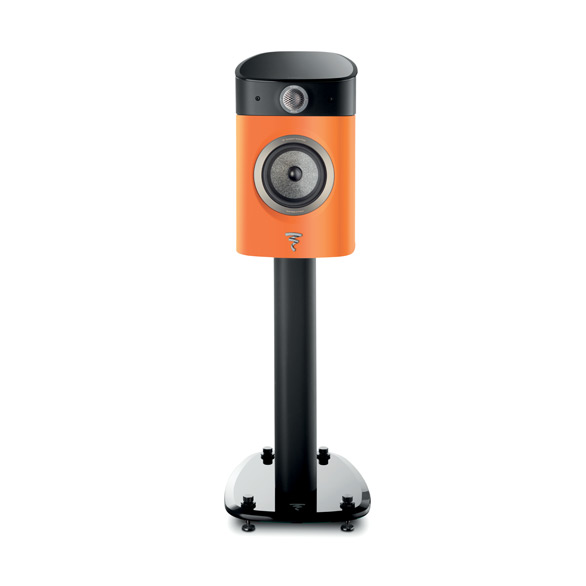
Image courtesy of Focal
The Sopra Ones do come in five different colors. We have the white glossy finish here, and I really like the way that they brighten up our mid-field office system room. Great looks!
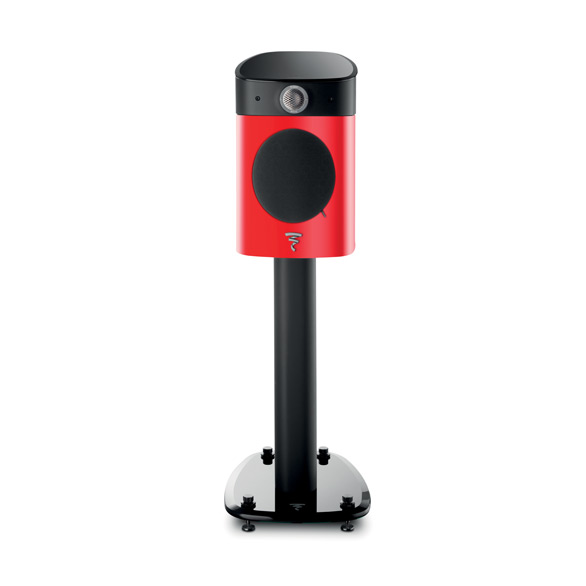
There's no doubt in my mind that the Focal Sopra One Loudspeaker is an overperforming audio wonder. In its category of size and price, it's definitely picking up a 2020 Brutus Award from me.
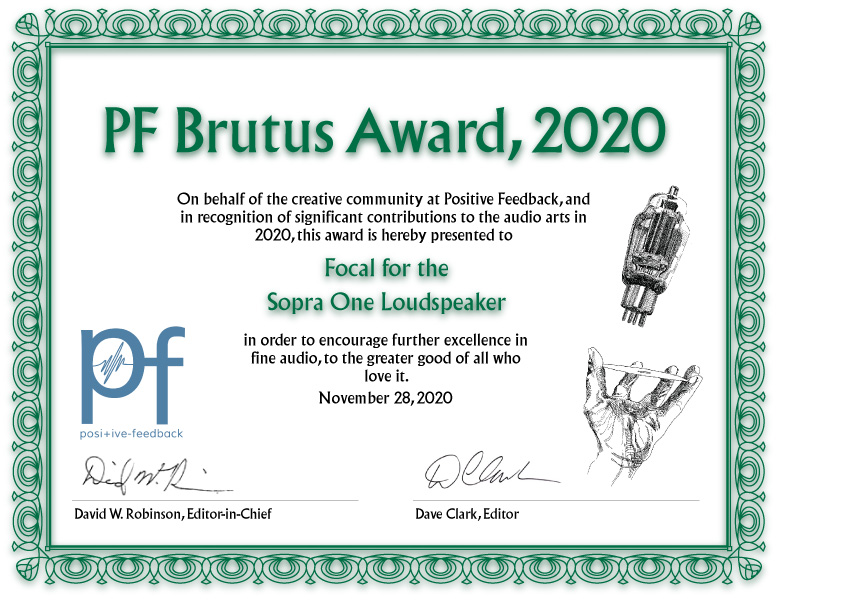
DS Audio ION-001 Record and Turntable Ionizer
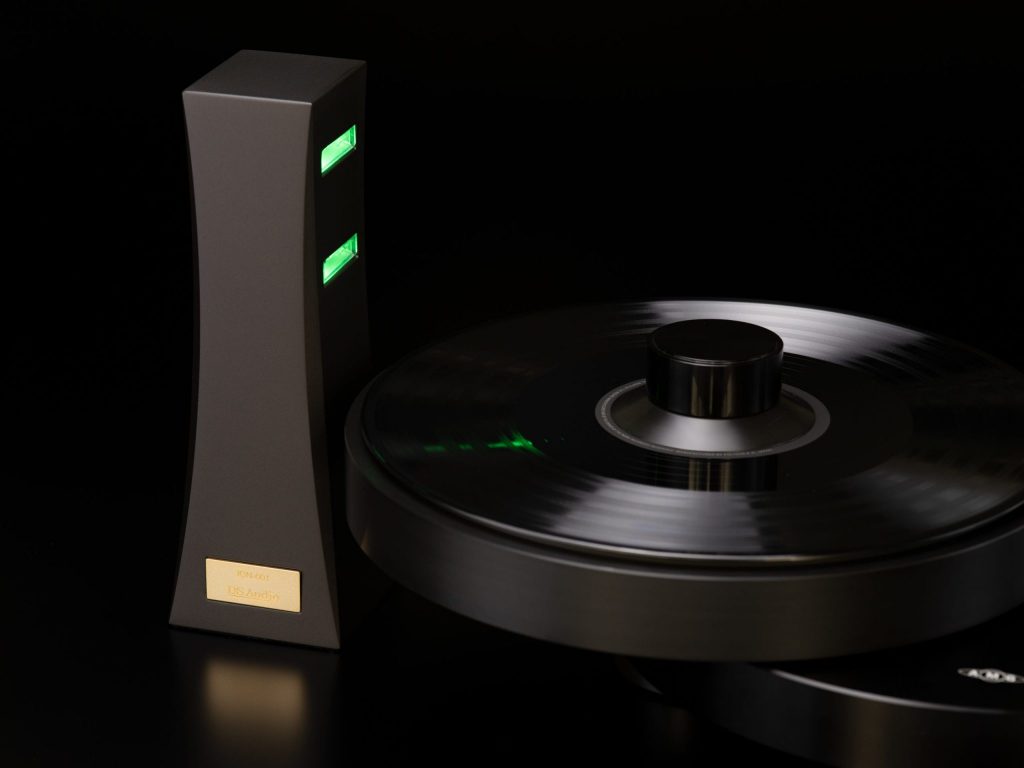
Image courtesy of DS Audio
Back last summer, I published a major review of the Wave Kinetics NVS Reference Turntable, the Durand Tosca Tonearm, the DS Audio DS Master1 Optical Cartridge with dedicated DS Audio EQ and Phono Amp. Included in that mix, and given a section of its own in the larger project, was a late arrival: the DS Audio ION-001.
You can read my impressions HERE. I don't have anything to add to those comments, but my ongoing experience with the ION-001 has validated my conclusion that this unique turntable accessory is an essential element in any turntable system. Make dealing with static build-up with LPs and turntables a constant background process, rather than a one-shot between album sides. Zap static in real time!
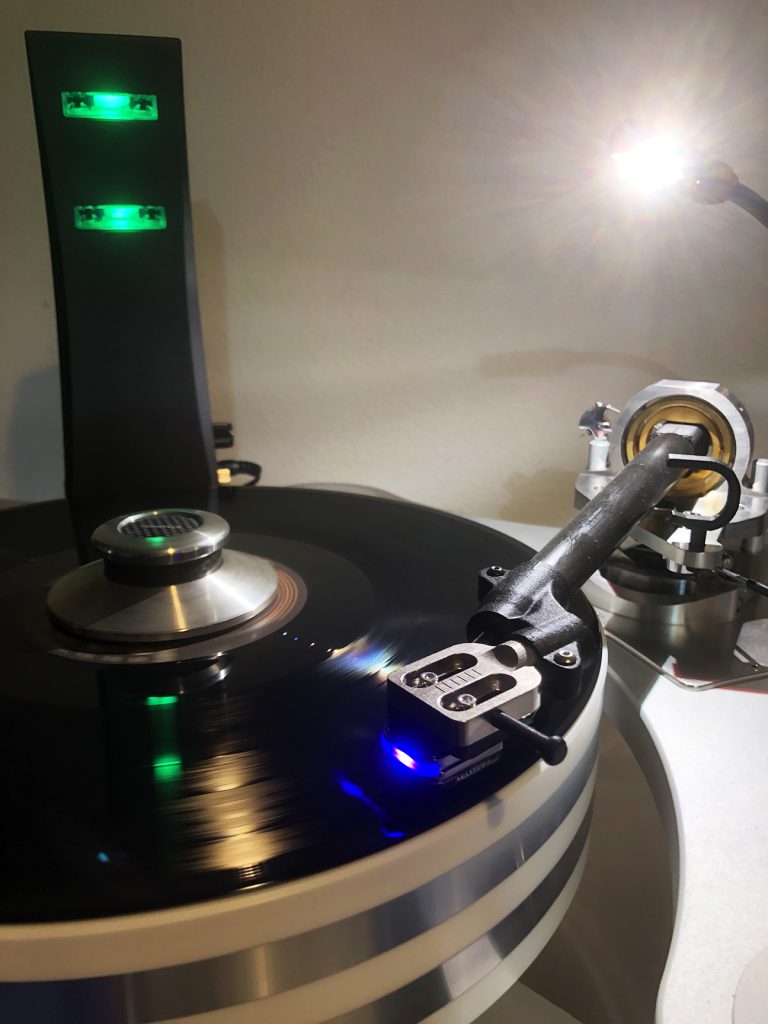
The DS Audio ION-001 at work in the background, with the Wave Kinetics NVS Reference Turntable, Durand Tosca Tonearm, and DS Audio DS Master1 Optical Cartridge in the foreground. Photograph and image processing by David W. Robinson
LP lovers, this one is for you.
And the DS Audio ION-001 is certainly worthy of one of my 2020 Brutus Awards.
Done!
